PICCOLA, GRANDE FILM COMMISSION
Vent’anni fa, nel gennaio 2003, in Friuli Venezia Giulia veniva istituito il primo Film Fund italiano: all’evento Cinema & Video International dedicò la copertina. Per Friuli Venezia Giulia Film Commission, operante dal 2000, il Fondo è stato un importante supporto, nonostante che le risorse rese disponibili siano sempre state, e lo sono tuttora, contenute; senz’altro inferiori a quelle di gran parte degli organismi omologhi delle altre regioni italiane.
Nonostante questo, la professionalità e l’affidabilità dimostrate, sia alle produzioni che alle amministrazioni territoriali che si sono avvicendate, ne hanno assicurato l’esistenza e favorito la crescita. La conferma ce l’ha data la coordinatrice Chiara Valenti Omero, che lo scorso gennaio, a Udine, nel presentare il nuovo regolamento in vigore da quest’anno, ha reso noti i numeri 2023 della spesa diretta sul territorio, 8,5 milioni di euro, e quelli dei contributi erogati attraverso il Fondo, 1,6 milioni di euro: il cosiddetto effetto moltiplicatore è di 1 a 5, che, considerando anche la spesa indotta, diventa di 1 a 9 (15 milioni di euro). Straordinaria performance, dovuta soprattutto al lavoro della Film Commission, che, lo ricordiamo, ha legato il territorio a grandi autori – un nome per tutti: il premio Oscar Gabriele Salvatores – e a importanti produzioni internazionali: lo scorso anno – al passo con i tempi – la regione ha ospitato ben quattro serie televisive targate Netflix.
Dallo scorso anno FVG Film Commission è parte dell’ente regionale Promoturismo FVG: segno che l’amministrazione della Regione la considera un asset strategico per lo sviluppo del territorio.
Lo ha ribadito l’assessore regionale alle attività produttive e al turismo, Sergio Bini, nel citato incontro di Udine, evidenziando come la valorizzazione delle maestranze locali sia il parametro prioritario nel nuovo regolamento (all’argomento dedichiamo un approfondimento nelle pagine che seguono).
L’assessore ha auspicato, in chiusura del suo intervento, la possibilità di programmare le risorse destinate al Fondo con una visione triennale. Una visione, aggiungiamo noi, che darebbe maggiore efficacia al lavoro di FVG Film Commission.
LITTLE, BIG FILM COMMISSION
Twenty years ago, in January 2003, the first Italian Film Fund was set up in Friuli Venezia Giulia: Cinema & Video International dedicated its front cover to the event.

The Fund has been an important support for the Friuli Venezia Giulia Film Commission, in operation since 2000, despite the fact that the resources available have always been and still are quite modest; undoubtedly lower than those of the majority of similar entities in other Italian regions.
Nonetheless, the professionalism and reliability demonstrated to productions, as well as the succession of territorial administrations, have guaranteed its existence and supported its growth. This was confirmed to us by the coordinator, Chiara Valenti Omero who, last January, in Udine, during the presentation of the new regulations which come into force this year, announced the figures for 2023 regarding the direct expenditure in the region, € 8.5 million, and of the contributions paid through the Fund, € 1.6 million: the so-called multiplying effect is 1 to 5, which, also considering the induced expenditure, becomes 1 to 9 (€ 15 million).
Since last year, the FVG Film Commission has been part of a regional body - Promoturismo FVG: a sign that the Regional administration considers it to be a strategic asset for the development of the territory.
This was confirmed by the regional councilor responsible for production activities and tourism, Sergio Bini, at the above-mentioned meeting in Udine, emphasizing that the valorization of local workers is the priority parameter of the new regulations (we will be looking at this topic in greater depth in the following pages).
The councilor ended his speech with the hope that it will be possible to program the resources destined for the Fund with a three-year vision. A vision, we would add, that would make the work of the FVG Film Commission even more effective.
Seguici su : cinemaevideo.it
Gennaio/Febbraio 2023 | 7 ITALY, IN A FEW SIMPLE LETTERS. fvgfilmcommission.com the swarm giro del mondo in puglia in apulia 73. berlinale film italiani films wemw girare in tempo di guerra in war time S peciale european film market /191 & international cinema video Periodico professionale dell’audiovisivo / Audiovisual culture trade magazine













temporanei Toscana per il cinema e sviluppato grazie a Biennale College – Cinema della Mostra Internazionale d’Arte Cinematografica di Venezia.
Le riprese si sono svolte nel riminese, tra Sant’Agata Feltria e San Leo, a Bologna e a Sestino in provincia di Arezzo.
Generation Kplus ospita invece la ‘prima volta’ di Enzo d’Alò alla Berlinale, dove concorrerà con il suo nuovo film d’animazione, Mary e lo spirito di mezzanotte (A Greyhound of a Girl), un appassionante racconto di formazione liberamente tratto dal romanzo La gita di Mezzanotte di Roddy Doyle, con protagonista Mary, esuberante ragazzina che si muove tra passato, presente e futuro in una incantevole Irlanda dai colori vividi e paesaggi mozzafiato. Una storia scritta da Enzo d’Alò e Dave Ingham, prodotta da Paul Thiltges Distributions, Aliante, Jam Media, GOAG Productions, Rija Films, Amrion Production e Fish Blowing Bubbles, con il contributo di Film Fund Luxembourg, Eurimages, Ministero italiano della Cultura, Toscana Film Commission e di Regione Campania (fondi POR Campania FESR 2014-2020). Diverse eccellenze del territorio campano e toscano sono state intensamente coinvolte dal progetto: oltre a numerosi artisti campani, le società Digitalcomoedia e Tile Storytellers, specializzate nel settore dell’animazione, che hanno collaborato alla realizzazione delle scenografie e delle animazioni, alla fase di color correction e al pre-montaggio dell’opera.

Una sinergia che si inserisce nel segno del nuovo progetto in corso del Distretto Campano dell’Audiovisivo - Polo del Digitale e dell’Animazione Creativa, fortemente voluto dalla Regione Campania con la Film Commission Regione Campania, e che ospiterà su un intero livello della struttura un hub tecnologico avanzato - con sale color grading e mixaggio audio, render farm e laboratori per l’animazione - per completare la filiera produttiva locale e sollecitare attività di produzione e sperimentazione nei settori ad alto contenuto di innovazione.
Anche in Toscana si sta sviluppando un importante polo dedicato alla produzione di animazione: le animazioni del film, infatti, sono state in parte realizzate anche a Manifatture Digitali Cinema Prato, grazie a un bando di residenza lanciato da Toscana Film Commission: Enzo d’Alò ha potuto lavorare per due anni in una sede efficiente e attrezzata con un gruppo di giovani toscani talentuosi. La colonna sonora, inoltre, è legata al territorio: l’orchestra d’archi è infatti stata registrata presso il Teatro dei Rinnovati di Siena dai partecipanti alla prima edizione della Bottega di Alta Specializzazione Film Scoring Course di Accademia Musicale Chigiana e Toscana Film Commission. Il film sarà distribuito nei cinema italiani da BiM Distribuzione.
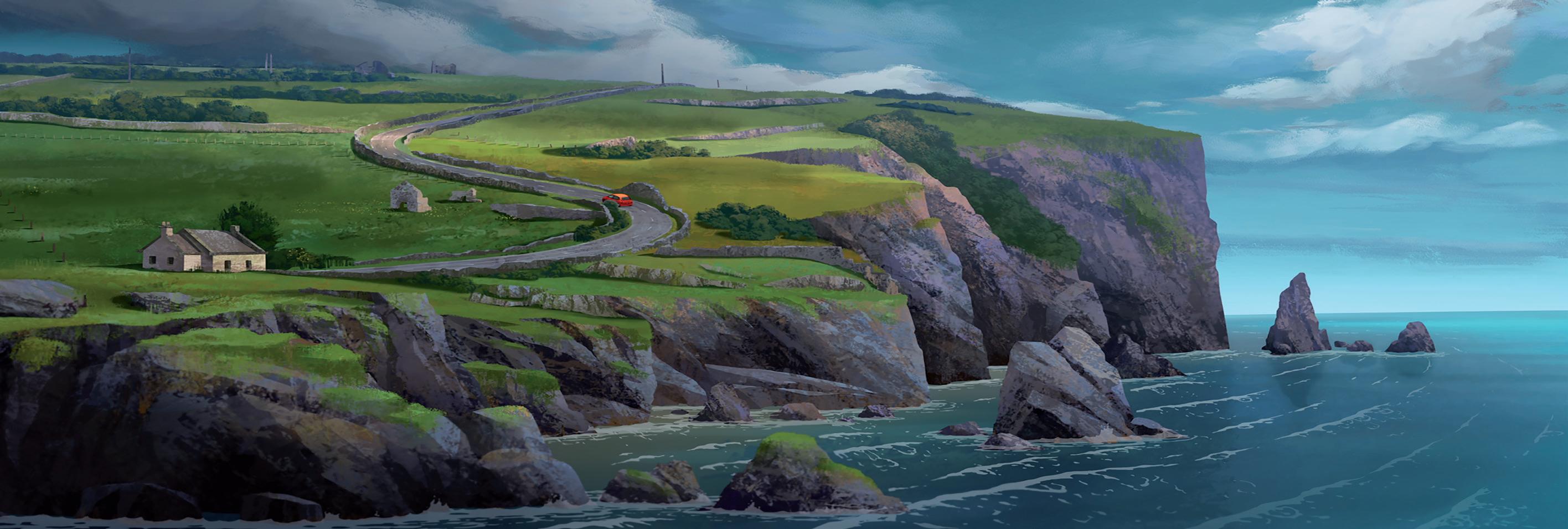
THE TERRITORIES FOR THE NEW GENERATIONS
The P roperties of Metals by Antonio Bigini, in competition in Generation, and A Greyhound of a Girl by Enzo
D’Alò, in Generation Kplus. The decisive role of the Film Commissions of Campania, Tuscany and Emilia Romagna
Generation and Generation Kplus: two competitive sections of the Berlinale that look at new generations and “allow young audiences to reflect themselves and re-imagine themselves in a possible world”, according to the definition of its director, Sebastian Markt . It is here that two Italian productions that are deeply rooted in different regional territories and supported by their film commissions have found a space.
The properties of Metals , a fairy tale with gloomy tones, freely inspired by a true story set in the 1970s, in competition in Generation, stars Pietro, a boy who displays mysterious talents: he can bend metal by just touching it. The movie, written and directed by Antonio Bigin i, is inspired by the stories of the so-called “mini-Gellers”, children with supposed psychokinetic powers who were studied at the end of the Seventies. Produced by Kiné with Rai Cinema , with the support of the Regione Emilia-Romagna through the Emilia-Romagna Film Commission, this feature movie was filmed with the contribution of Creative Europe MEDIA and also realized within the sphere of the Sensi Contemporanei Toscana program for cinema and developed thanks to Biennale College – Cinema of the Venice International Film Festival. It was filmed in the Rimini area, between Sant’Agata Feltria and San Leo, in Bologna and Sestino in the province of Arezzo. Generation Kplus hosts Enzo d’Alò for the ‘first time’ at the Berlinale, where he will be competing with his new animation movie, A Greyhound of a Girl . This is an enthralling tale about learning freely based on the novel by Roddy Doyle, the protagonist of which is cheeky little Mary, who moves between past, present and future in a delightful brightly colored Ireland with breathtaking landscapes. The story was written by Enzo d’Alò
2023 January/February | 11
DA TORINO A BERLINO: IL PERCORSO DEI TALENTI
Anche questa 73a edizione della Berlinale è ricca di talenti passati per il Torino Film Lab La lunga lista si apre con il sudafricano John Trengove, in concorso con Manodrome, che ha esordito al TFL nel 2017 con il suo primo lungo, The Wound. E poi ancora: nella sezione Encounters Family Time (Mummola), debutto della regista finlandese
Tia Kouvo, sviluppato nel 2021 in ‘FeatureLab’ e vincitore del TFL Production Award e del Green Filming Award. Nella sezione Panorama The Quiet Migration, opera prima della regista danese
Malene Choi; in Generation Kplus Le proprietà dei metalli, opera prima di Antonio Bigini, e in Berlinale Forum Mammalia, del rumeno Sebastian Mihăilescu.
FROM TURIN TO BERLIN: THE ITINERARY OF THE TALENTS
This 73rd edition of the Berlinale will also be packed with talents that have passed through the Torino Film Lab. The long list opens with South Africa’s John Trengove, in competition with Manodrome, after debuting at the TFL in 2017 with his first feature, The Wound . Plus: in the Encounters section, Family Time (Mummola), is the debut of the Finnish director, Tia Kouvo, developed in 2021 in ‘FeatureLab’ and winner of the TFL Production Award and the Green Filming Award; in the Panorama The Quiet Migration section is the first work by Danish director Malene Choi; in Generation Kplus, The properties of Metals, the first work by Antonio Bigini and, in the Berlinale Forum, Mammalia, by Romania’s Sebastian Mihăilescu.
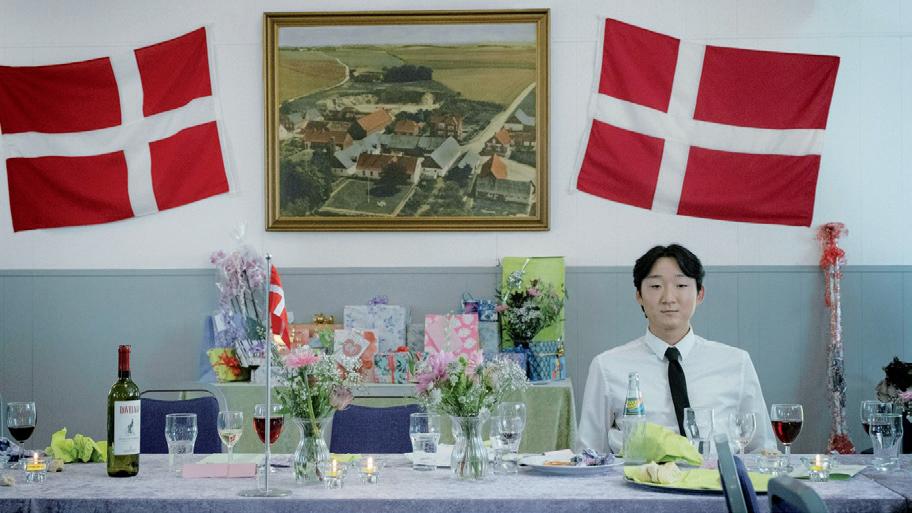
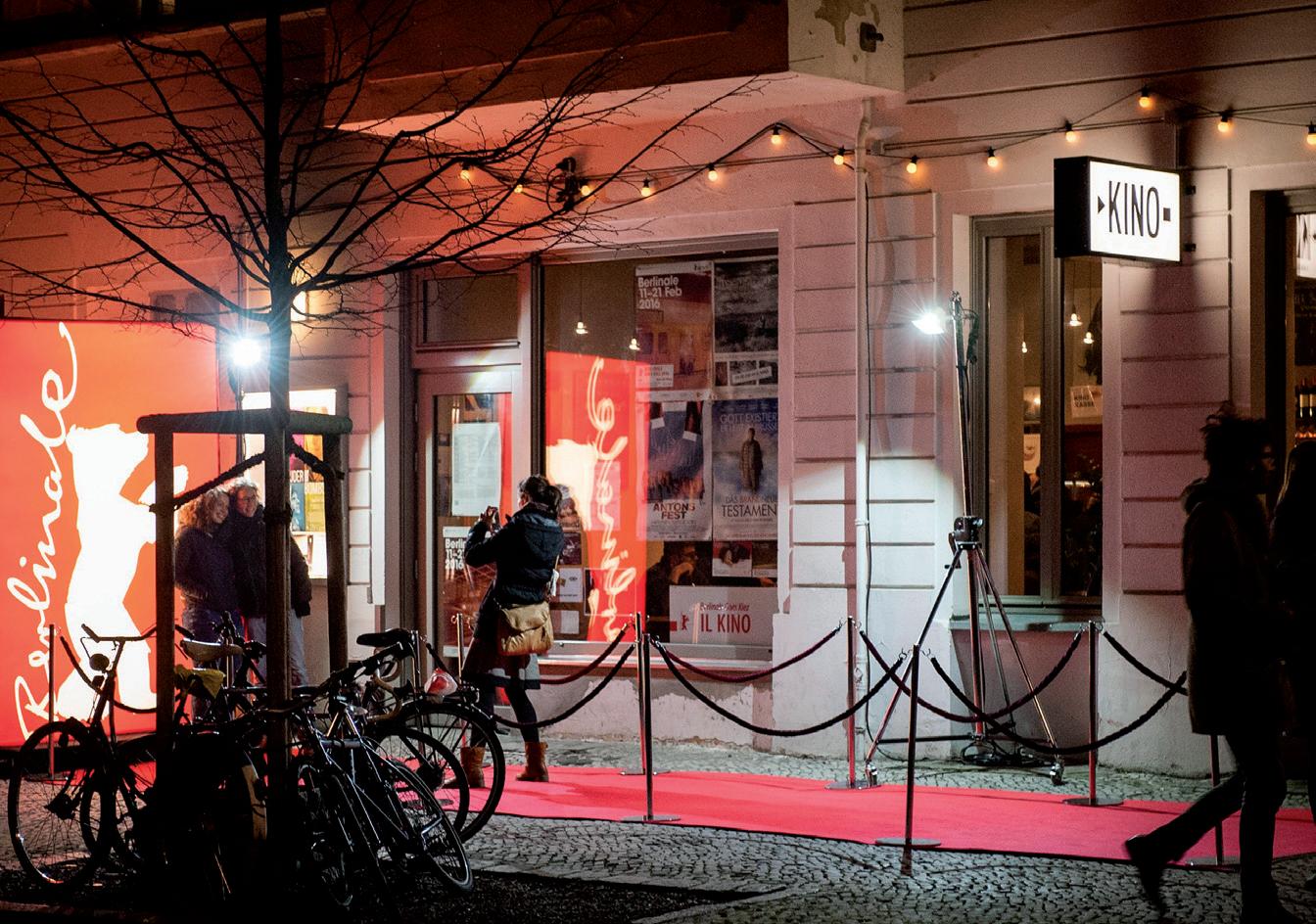
and Dave Ingham and it is produced by Paul Thiltges Distributions, Aliante, Jam Media, GOAG Productions, Rija Films, Amrion Production and Fish Blowing Bubbles, with the contribution of Film Fund Luxembourg, Eurimages, the Italian Ministry of Culture, the Toscana Film Commission and the Regione Campania Film Commission (POR Campania FESR 2014-2020 funds). A number of preeminent names from Campania and Tuscany were intensely involved in the project: in addition to numerous artists from Campania, Digitalcomoedia and Tile Storytellers, specialized in the animation sector, collaborated on the sets and the animation, on the color correction phase and the pre-editing of the work. This synergy fits well into the new project underway in the Distretto Campano dell’Audiovisivo [Audiovisual District of Campania]- Polo del Digitale e dell’Animazione Creativa [Digital and Creative Animation Pole], which the Regione Campania was very keen to create with the Film Commission Regione Campania and will be hosting an advanced technological hub on an entire level of the structure.
Tuscany is also developing an important pole dedicated to animation production: in fact, the animations for the movie were partly realized at Manifatture Digitali Cinema Prato, thanks to a residency open call launched by the Toscana Film Commission: Enzo d’Alò was able to work for two years in an efficient and well-equipped base with a group of talented young Tuscans.
Moreover, the soundtrack is also linked to the territory: in fact, the string orchestra was recorded at the Teatro dei Rinnovati in Siena by the participants in the first edition of the Bottega di Alta Specializzazione [High Specialization Workshop] Film Scoring Course of the Accademia Musicale Chigiana and the Toscana Film Commission. The movie will be distributed in Italian theaters by BiM Distribuzione.
RITORNO IN PRESENZA

Un’ organizzazione degli spazi (e dei tempi) più efficiente, attenta a promuovere e a curare le connessioni fra i professionisti ma anche a creare le condizioni perché ‘la magia degli incontri fortuiti’ abbia luogo. Con le antenne puntate ai cambiamenti in corso e alle esperienze da cui trarre ispirazione in merito al raggiungimento e alla costruzione di nuovo pubblico e alle sfide economiche, sociali ed ecologiche della sostenibilità. È questo il nuovo volto dell’European Film Market, che marcherà il suo ritorno in presenza dopo la pandemia. Il primo, in presenza, guidato da Dennis Ruh, che lo dirige dal 2020 e che è orgoglioso di annunciare, che “l’interesse verso l’edizione ‘fisica’ di quest’anno è un’ulteriore prova che un mercato in presenza è fondamentale per l’industria. Al momento (17 Gennaio ndr), le richieste degli accrediti al mercato sono addirittura un pò più alte rispetto allo stesso period nel pre-pandemia.”
L’infrastruttura del mercato è stata ridisegnata per far quadrato attorno a Potsdamer Platz: questo si traduce in una maggiore snellezza dei tempi dei partecipanti. “Il fatto che tutti i luoghi del mercato siano concentrati nella stessa area e raggiungibili tutti a piedi – continua Ruh - ci permette di far vivere un’esperienza ancora più accessibile per i partecipanti, con collegamenti sostenibili che stimolino la riflessione. Mi riferisco in special modo alla nuova location delle EFM Industry Sessions presso il Centro di Documentazione Fuga, Espulsione e la Riconciliazione e al trasferimento del Berlinale Series Market dallo Zoo Palast a Potsdamer Platz. Ci sarà, inoltre, uno spazio di incontri, creato ex novo, il Café Connect, mentre gli screenings di mercato interesseranno ancora di più i CinemaxX”.
Una direzione è senz’altro quella di “avvicinare”, ad esempio con i nuovi EFM Connects: Lunches, che offrono agli espositori e ai partners l’opportunità di svolgere incontri individuali accuratamente selezionati in un’atmosfera rilassata, durante un pranzo di tre portate, al Ristorante vicino al Gropius Bau. “Questi pranzi sono pensati per favorire il networking e la nascita di relazioni durature, al di là dei formati a cui sono solitamente associati all’interno dell’EFM, come le attività legate ai Documentari o alle Serie, o al programma dei Paesi in Focus. Il nostro obiettivo è creare e curare le connessioni”.
12 | Gennaio/Febbraio 2023
Il direttore Dennis Ruh anticipa le novità del Mercato, sempre più attento a curare le connessioni tra i professionisti
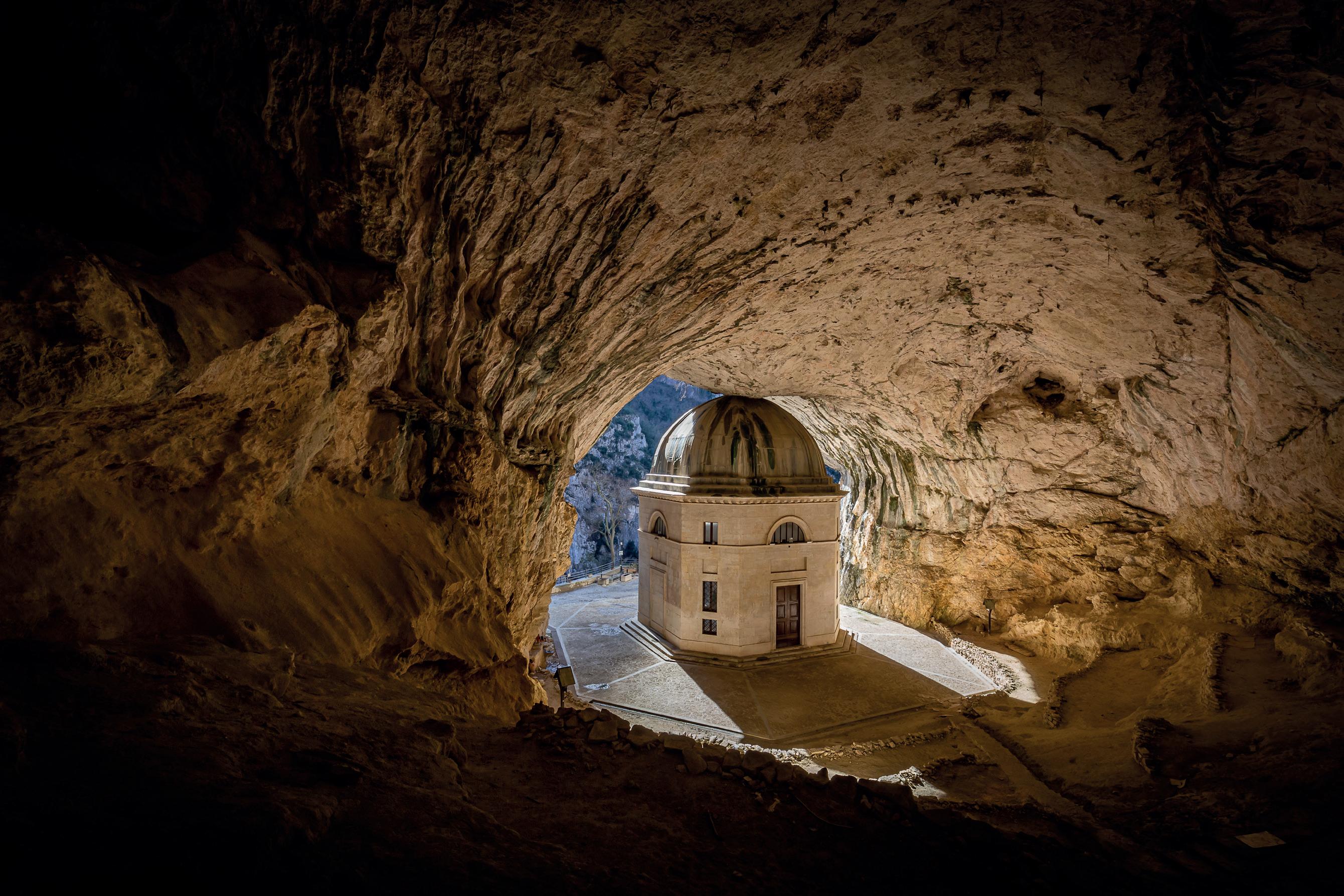

Altra novità è Producers & Project Pages , piattaforma dove i produttori possono creare una propria pagina profile, dove caricare fino a tre recenti progetti e renderli visibili a tutti i partecipanti del mercato.

“L’intenzione – conferma il direttore dell’EFM - è quella di fornire l’infrastruttura professionale per promuovere i progetti con i partners giusti, finanziatori, creativi e distributori, incentivando le connessioni. Dall’altro lato, nel ‘mondo reale’ abbiamo esteso lo spazio del Producers & Projects Hub al secondo piano del Gropius Bau. Ma oltre a pianificare le connessioni, credo anche fermamente nella magia degli incontri imprevisti: soprattutto dopo anni di incontri online pre-fissati, l’incontro fortuito è uno degli elementi che rendono indispensabili i mercati e i festival in presenza”.
Infine, un nuovo mix di online e offline riguarderà anche la nona edizione di EFM Startups: “Il programma di quest’anno presenterà ancora una volta dieci imprenditori internazionali, innovatori che lavorano nel campo della produzione, dello sviluppo e della distribuzione, laddove media e tecnologia si incrociano. Si svolgerà a Berlino da 18 al 21 febbraio, ma con programma esteso online che precede il mercato, che prevede una formazione personalizzata con esperti dell’industria. Altro elemento di novità, in partnership con Scale-up factory, è che connetteremo dieci investitori selezionati personalmente con le dieci start-ups, in modo da elevarne la prospettive commerciali e farle salire di livello”.
CAPPUCCINO WITH THE ITALIAN FILM COMMISSIONS
Qui sopra, una delle nuove location della Berlinale: il verti Music Hall (foto di pedro Becerra). sopra, “le proprietà dei Metalli”; più in alto, “Mary e lo spirito di Mezzanotte”. in Basso, dennis ruH
THE RETURN OF THE PHYSICAL MARKET

The EFM director, Dennis Ruh, announces the Market’s new features which focus on curating the connections between professionals


Amore efficient organization of the spaces (and times), paying attention to curating the connections between professionals as well as creating the right conditions for ensuring that ‘the magic of coincidental meetings’ can take place. With the antennae pointed at the changes in progress and the experiences from which to draw inspiration regarding the attainment and construction of new audiences as well as the economic, social and ecological challenges of sustainability. This is the new face of the European Film Market which marks its return to a physical format after the pandemic. It will be the first in person event led by Dennis Ruh, who has directed the market since 2020 and is proud to announce that “the feedback and interest for this year’s physical edition proves once again that an on-site market is crucial for the industry to meet and network in person. At the moment (January 17th: Editor’s note), the amount of market badges requested is even slightly higher than this time of the year pre-pandemic.”
Cappuccino with the italians: l’appuntamento delle film commission italiane con i produttori dell’audiovisivo internazionali per creare opportunità di sviluppo di progetti nei vari territori regionali è il 18 febbraio dalle 10 alle 12 presso l’Italian Pavillion dell’European Film Market. L’incontro è organizzato da Italian Film Commissions in collaborazione e con il supporto di Enit – Agenzia nazionale del Turismo. Il tradizionale Italian Pavillion al Gropius Bau sarà più grande e organizzato diversamente: al piano terra ci sarà uno spazio dedicato alle conferenze, ai panel e agli eventi al centro dello stand, mentre, nell’area elevata dell’atrio centrale, ulteriori spazi per le vendite, le film commission e i meeting. Come in passato, infine, saranno presenti varie società con stand individuali in tutta l’area del mercato
The rendezvous of the Italian film commissions with international audiovisual producers to create development opportunities for projects in the various regional territories will be held from 10 a.m. to 12 p.m. on February 18 in the European Film Market’s Italian Pavilion. The meeting is organized by the Italian Film Commissions in collaboration and with the support of Enit – the National Tourism Agency. “The traditional Italian Pavilion in the Gropius Bau” explains Ruh, “will be much larger and organized differently this year: on the ground floor there will be a dedicated conference space in the center of the stand for panel discussions and other events, as well as a large number of further sales, film commissions and meeting spaces on the elevated area of the Central Hall. And as in the past, we have several sales companies with individual stands within the market venues.”

14 | Gennaio/Febbraio 2023
CAPPUCCINO CON LE FILM COMMISSION ITALIANE




The market infrastructure has been redesigned in order to create a square around Potsdamer Platz: this means a greater streamlining of the times for the participants: “By having all the market venues in walking distance close together,” continues Ruh, “we have achieved an even more accessible market experience for our visitors, creating sustainable links and also inspiring and challenging them to reflect. Especially with our new EFM Industry Sessions location in the Documentation Center for Displacement, Expulsion, Reconciliation and with the Berlinale Series Market moving from the Zoo Palast to Potsdamer Platz. There will also be a meeting space, created ex novo, the Café Connect, while the market screenings will increasingly involve the CinemaxX”.
One direction is undoubtedly to bring people closer together, for example with the new “EFM Connects”: Lunches that offer exhibitors and partners an opportunity to hold carefully selected individual meetings in a relaxed atmosphere during a three course lunch at the Restaurant near the Gropius Bau: “These lunches should foster networking and long-lasting connections, going beyond the formats that are usually associated with the EFM, like the Documentary or Series activities or the Country in Focus program. Our goal with “EFM Connects” is to create and curate connections”.
Another new feature is “Producers & Project Pages”, a platform where every producer has the opportunity to create a profile page uploading up to three recent projects and making these visible to all market participants.
“With this development”, confirms the director of the EFM, “we want to provide the necessary market infrastructure to promote projects to the right partners, financiers, creatives and distributors and to foster connections. On the other hand, in the physical world, we will provide extended space for producers on the 2nd floor of the Gropius Bau, in the “Producers & Projects Hub”. But beside making and planning connections, I believe in the magic of unforeseen encounters especially after the years of pre-arranged online meetings, the coincidental meeting is one of the elements which makes physical markets and festivals indispensable”.

Finally, a new online and offline mix will also be a feature of the ninth edition of EFM Startups: “This year’s program will once again present 10 innovative international entrepreneurs working in the area of production, development and distribution, intersecting media and technology. It will take place in Berlin from February 18-21, but with extended programming online prior to the market in the form of customized training with industry experts. Another new element of the program in partnership with Scale-up factory is that we will connect up to 10 hand-picked investors with the 10 start-ups, elevating the commercial perspectives and reaching the next dimension”.
I PRIMI RISULTATI DI GREEN FILM RESEARCH LAB
Domenica 19 febbraio alle 11.30 presso la Conference Lounge del Padiglione Gropius, verranno presentati i primi risultati e la metodologia del Green Film Research Lab La presentazione della ricerca, finanziata dal MiC, è a cura di Trentino Film Commission in collaborazione con Cine Regio. Verranno raccontati i dettagli del primo obiettivo, che è stato raggiunto: quantificare i benefici ambientali in termini di riduzione delle emissioni climalteranti associati all’applicazione di ciascun criterio del disciplinare Green Film e l’impegno economico aggiuntivo (o risparmio) necessario per soddisfarli, attraverso un’analisi comparativa delle produzioni certificate rispetto a quelle “tradizionali”.
Durante l’evento verrà presentata anche la rete di partner di Green Film che collaborano con un approccio comune per affrontare il tema della sostenibilità ambientale nell’industria audiovisiva a livello europeo.

NEVINA SATTA NEL BOARD DELL’EFA
THE FIRST RESULTS OF THE GREEN FILM RESEARCH LAB
On Sunday February 19, at 11.30 a.m. in the Conference Lounge of the Gropius Pavilion, the first results and methodology of the Green Film Research Lab will be presented. The presentation of the research, financed by the MiC, is handled by the Trentino Film Commission in collaboration with Cine Regio
The details of the first objective – which was achieved - will be described: this was to quantify the environmental benefits in terms of the reduction of climate altering emissions associated with the application of each criterion of the Green Film rating system and the additional economic commitment (or savings) necessary to satisfy them, through a comparative analysis of certified productions with respect to “traditional” ones.
During the event, the network of Green Film partners who collaborate with a common approach to tackling the topic of environmental sustainability in the audiovisual industry on a European level will also be presented.
Nevina Satta (la seconda da destra) è nuovo membro per l’Italia del board di European Film Academy. Affiancherà Graziella Bildesheim (prima da sinistra), che sarà in carica ancora per il 2023, nella promozione dell’attività dell’Accademia presso l’industria italiana.
Il prossimo appuntamento è all’EFM della Berlinale.

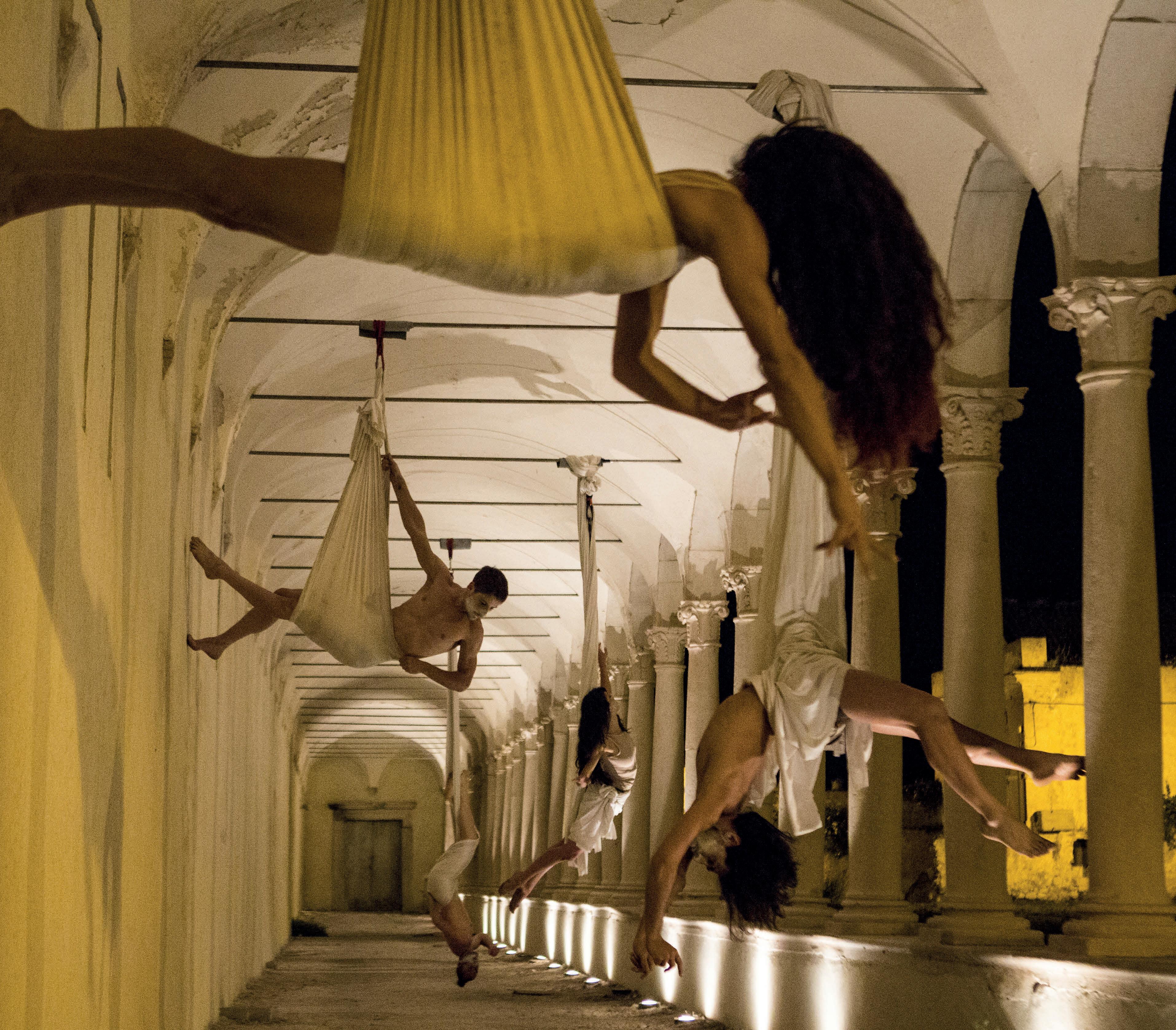
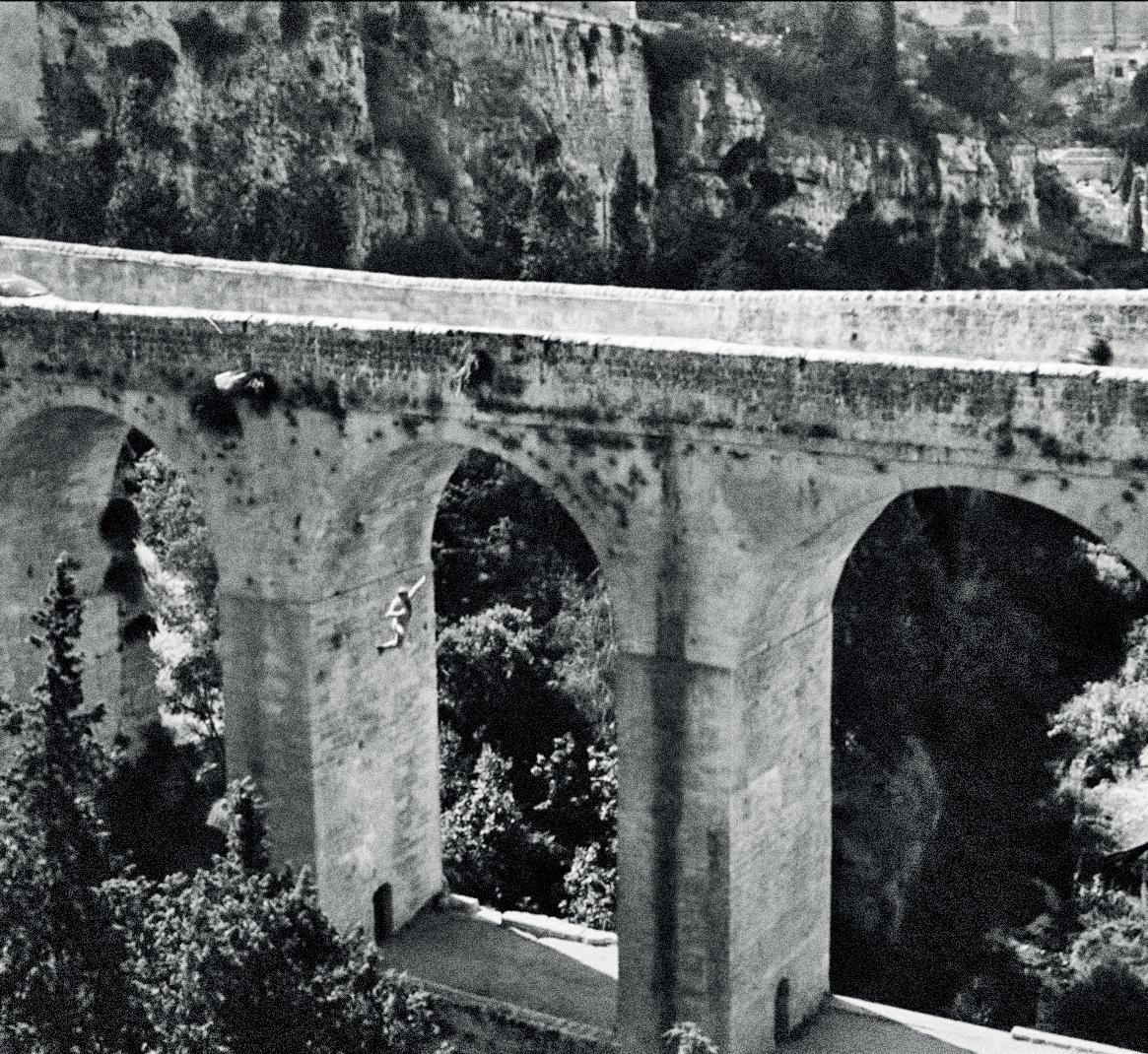

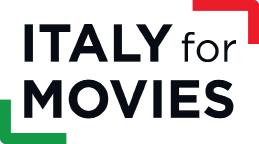













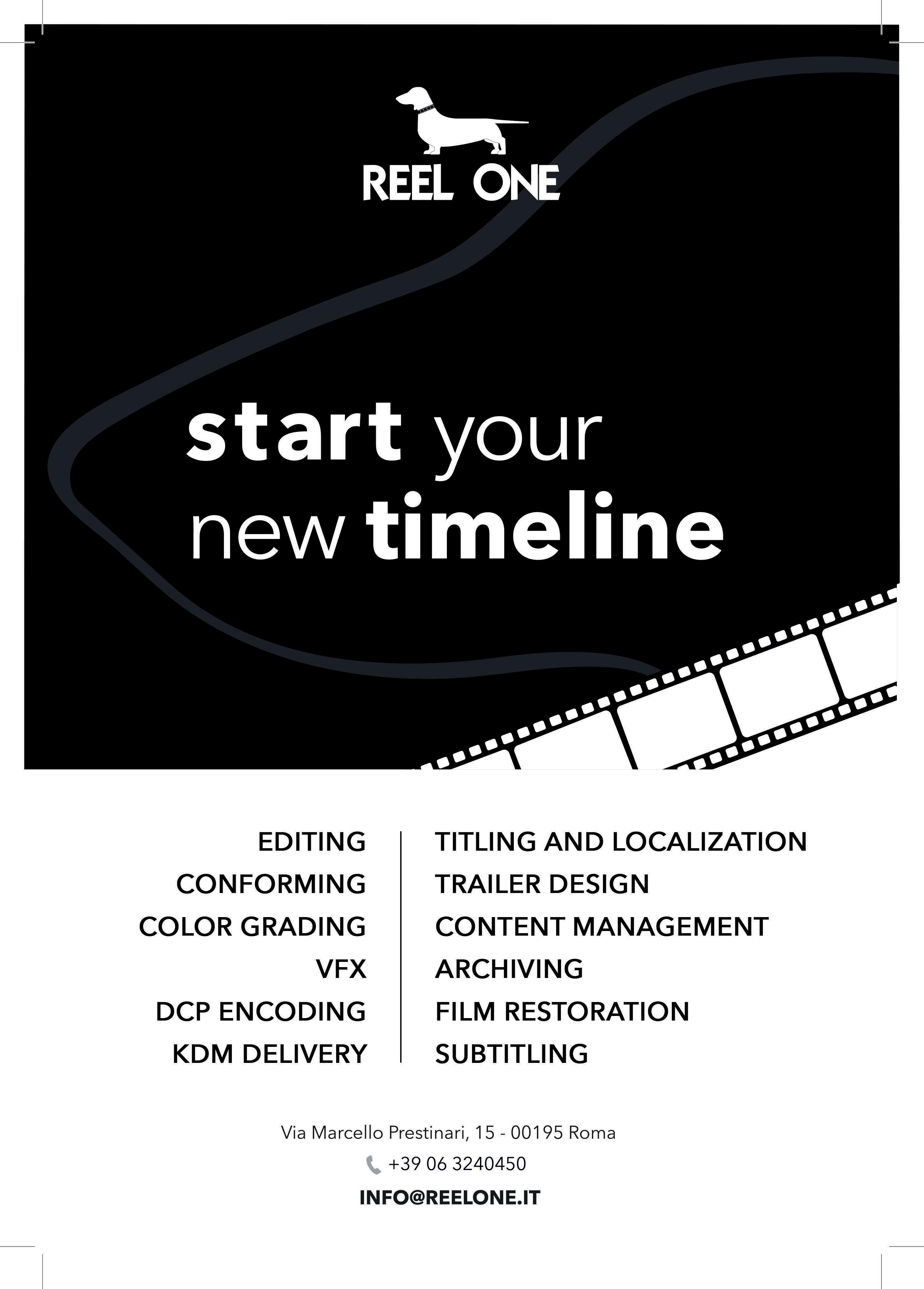









GIRARE IN TEMPO DI GUERRA

L’idea che l’industria cinematografica sia una questione di identità culturale prima ancora che un business ha guidato l’edizione 2023 di When East Meets West
 Mancini
Mancini
In inglese la parola sparare è la stessa di girare un film: in entrambi i casi si mira un obiettivo, si ritaglia uno spazio: ma cosa resta fuori dall’immagine? Quanto può rivelarci il cinema della Guerra contemporanea, e cosa succede a coloro che per mestiere ricreano la realtà attraverso le immagini e adesso si trovano in prima linea ad imbracciare le armi pur non abbandonando la macchina da presa? Sono le domande a cui cerca di dare una risposta It’s not a full picture, il documentario che la regista ucraina Marina Stepanska ha iniziato a girare il 22 maggio scorso, a tre mesi dall’inizio dell’invasione russa: quattro storie di registi e direttori della fotografia, donne e uomini (fra cui Oleg Sentsov, regista-soldato dopo 5 anni nelle prigioni russe) e delle loro scelte in questa circostanza urgente ed estrema. Il progetto ha vinto uno dei tre premi principali di When East Meets West, il forum di coproduzione triestino diretto da Alessandro Gropplero e organizzato dal Fondo Audiovisivo del Friuli Venezia Giulia diretto da Paolo Vidali, in collaborazione con il Trieste Film Festival.
“La vita dei miei protagonisti dipende dall’andamento della guerra, e continuerò a girare perché è estremamente importante documentare la loro esistenza e le loro riflessioni”, rivela Stepanska.
Il budget, ancora tutto da costruire, conta su un piccolo supporto dell’European Producers Club e del Programma speciale per l’Ucraina di Netflix, “grazie a cui siamo riusciti a realizzare il teaser che abbiamo presentato qui” spiega la produttrice, Julia Sinkevych (già direttrice di Odessa Film Festival) - abbiamo anche un partner in Polonia e l’idea è quella di far richiesta al Polish Film Institut.”
Ma il problema, visto che i fondi alla cinematografia ucraina sono sospesi, “è che potremmo dover rinunciare a essere coproduttori di maggioranza. Sarebbe un gran peccato perché è importante mantenere il controllo creativo dei nostri progetti. Se la comunità internazionale è interessata a mantenere vivo il cinema e la voce dei cineasti ucraini, forse potrebbe considerare di rivedere alcune regole per permetterci di finanziare le nostre storie.”

Dell’opportunità di ripensare ai meccanismi dei programmi di co-produzione internazionale contemplando anche scenari come quello ucraino, si è parlato nel panel con cui WEMW ha deciso di indirizzare la discussione sull’Ucraina verso la ricerca di soluzioni concrete, in continuità con l’iniziativa collettiva di fundrising e networking al Marchè du Film di Cannes, Ukranian Films Now, di cui WEMW era promotore assieme a EAVE e First Cut Lab.
Dal confronto con Natalia Movshovych, head of film programme all’interno del Ukrainian Institute, e Darya Bassel, filmmaker e produttrice, è emersa la proposta di offrire delle residenze estere per i filmmaker ucraini, per permettere loro di lavorare in un ambiente rilassato, magari finendo di montare le immagini che raccontano proprio quella situazione terribile e caotica, e che sono ‘troppo’ da sopportare in quel contesto stesso, fatto di black out e allarmi continui. Un altro aiuto concreto, nello specifico a It’s not a full picture, arriva inoltre dalla borsa di studio per partecipare all’Eave Producers Workshops, sponsorizzata dal Fondo
30 | Gennaio/Febbraio 2023
Carolina








blackouts and constant alarms.
Some other concrete help, specifically at It’s not a full picture, also comes from the scholarship for taking part in the Eave Producers Workshops, sponsored by the FVG Audiovisual Fund, which went to Sinkevych.

The idea that the film industry is a question of cultural identity even more than a business is at the heart of this year’s edition of the Trieste market which opened with a reflection on the role of cinema as a mark of identity and a means of cultural reproduction.

The other two projects that won the main awards also put identity at the center and offer an interesting reflection on life and death. The two square meters in the title of the documentary by Üce Volkan (2m2), a filmmaker who grew up in Belgium with Turkish parents, refer to the measurements of the burial space for Turkish immigrants in Belgium who, after a lifetime split between two countries and two cultures, have to face a fundamental decision: where will they be buried? It is produced by Hans Everaert for Menuetto Films.
Identities and burials are also discussed in Still Life with Ghosts, the feature debut of Spain’s Enrique Buleo, an episodic movie set in Castilla La Mancha: five stories united by the presence of life after death in a comical-macabre mix of fears and desires. The identity in this case is also that of gender: one of the protagonists is the ghost of a transgender woman who, in life, was never able to live as a woman and who, in order to do so after her death, needs to change the name on her grave. The producers are Quatre Films, Cuidado con el perro and Ikki Films.
The Gang by Carol & Marina Rodríguez Colás (produced by Maria Carla del Rio Betancourt for Fasten Films) also comes from Spain. The second work by the two sisters from Barcelona who specialize in stories that use fresh language to portray the outskirts of large cities, won the EWA Network I Have a Dream Award for Equality and Inclusion.
The Armenian documentary Shakespeare goes Armenian by Inna Sahakyan and Lilit Movsisyan, produced by Vardan Hovhannisyan, about a group of senior citizens in a Soviet period rest home coping with staging a production of Shakespeare, will go to the Berlinale European Film Market with a free badge thanks to the DAE Talent Development Prize, as-
signed in collaboration with the EFM. Two Georgian movies won free access to the Film Producers Network Markets: the documentary 9 Months Contract by Ketevan Vasha, the story of Jana, and her (third) surrogate pregnancy, a regular business in Georgia, and the drama feature movie, Milk and Honey, the first work by Tornike Gogrichiani, produced by Tekla Machavariani, a story of transition, where the protagonists are two teenagers exploring their identity, friendship and love to the rhythm of hip hop, in Kutaisi, the ‘criminal capital’ of Georgia in the early 2000s.
Another Armenian project, Hotel Diana by Suad Gara, a coproduction with the United Kingdom (Astar Productions, Asterisk Films), won the Pop-Up Film Residency Award.
Genre rules enter the Trieste workshop

Among the new features of the packed program for this year’s When East Meets West is the entry of genre cinema into the Inspirational Labs, with Genre Rules: thirteen producers will be taking part (including Italy’s Martin Tranquillini of Abisso Studio), and four tutors to inspire them (David Meadeb of Logical Pictures, Fabrizia Palazzo of Moviestar + International, Dario Vecchiato of Gap Busters and Angelica Ramirez of Bankside) under the guidance of the originators Luca Evangelisti and Massimiliano Matoni, director and programmer of the Trieste Science+ Fiction Festival, which will be celebrating its 60th anniversary next year.
“Genre has now become a fixed presence in festivals and arthouse cinema in what has always been the sphere of When East Meets West”, says Maltoni, “obviously in the sense of the elevated genre, a label used by sales agents to define anything halfway between pure genre and arthouse.”
“A sector where private equity is just as important as national and international funds: the market is broader and the competition is becoming fiercer because the supply is increasing” explains Evangelisti. “In Italy where, until 15 years ago, there was a cosmic void in this sphere, the market has begun to open up to such an extent that the best results come from international co-productions.”
AN AWARD FOR CO-PRODUCTIONS FROM ARTEVIDEO

This year When East Meets West is pulling out all the stops and setting up ‘a podium without ranking’ with three equal first prizes (€ 5000 each), thanks to the support of two new sponsors that have joined Film Center Serbia: the CICLIC WEMW Award, offered by the CiclicRégion Centre-Val de Loire, and the ARTE VIDEO CoProduction Award offered by the company led by Giuseppe Tissino, based in Palmanova, in Friuli Venzia Giulia and Rome.
“This award is the result of a desire to give concrete help to the development of filmmakers and producers, and for this reason we have decided to give an economic rather than in-kind recognition to avoid imposing logistical restrictions on anyone”, says Tissino. “It is the first time for When East Meets West, but we have already confirmed our participation next year.”
Arte Video is one of the five companies in the world certified by Apple for encoding: “moreover, we manage the platforms of Google, Sony Microsoft, Amazon, Disney and Paramount, as well as the Italian platforms and television companies. It is our core business. Recently we have also been collaborating with various producers for the post-production and color correction, covering the whole process that ranges from color grading to finalization and digital delivery.”
2023 Gennaio/Febbraio | 33
Above, An imAge of the one-to-one meetings on the left, A moment of wemw the AwArd ceremony (in the center, JuliA sinkevych And mArinA stepAnskA). on the opposite pAge: below, giuseppe tissino And mArco fAbbro of Artevideo. Above, A moment during the pitches
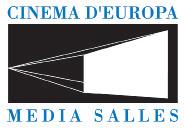


7 OUT OF 10 MOVIE-GOERS HAVE RETURNED TO THE MOVIE THEATER
This was the result in 2022 for France, the United Kingdom and Germany which lead the virtuous ranking, recovering around 70% of the pre-Covid theatrical audience.
Last in line is Italy, blocked at - 54% compared to 2019
The diminishing grip of Covid and consequent restrictive measures, as well as the re-appearance on the big screen of blockbusters with international appeal, are the main factors that created the pre-conditions for a widespread increase in audiences in movie theatres in 2022.

The initial figures available for Europe at the start of the New Year, as always still provisional and incomplete, give us reason to state that more or less 7 spectators out of 10 have returned to the cinemas compared to the pre-pandemic period.
Nonetheless, differences are to be seen, some of which are quite evident. Whilst the 2022 trend is positive on all the European markets that have shared their results, there is no denying that several territories fail to live up to the “7 out of 10” model.
The country at the top of the charts in terms of audience is once again France, touching on 152 million ticket sales, with an increase compared to 2021 of 59.2% and a drop compared to 2019, the last year before the pandemic, of 28.7%.
A similar trend also characterizes the United Kingdom. Here the first figures available, which, however, regard box office, reveal a 67% increase over the previous year and a drop of around 28% compared to 2019. In view of the fact that the general trend indicates a slight increase in average ticket price, it can be estimated that the decrease compared to 2019 will settle - at least for admissions - at around 30%.
The German market should also position itself at a similar level, with the initial figures showing 73.5 million tickets sold and a considerable recovery of over 80% compared to 2021, with a dip of around 33% compared to 2019. Spain sees audiences grow, though less evidently: the increase
would seem to be around 45% compared to the previous year. The difference here with respect to the last year before the pandemic is estimated to be greater, probably around 40%.
In fifth place in terms of number of spectators comes Italy, a market that shows a clear increase of more than 79% compared to 2021 but also a decidedly bigger difference with respect to 2019 than the other leading markets, coming to over 54%. The fact that the Italian market suffered particularly severely from the pandemic could already be demonstrated by the figures on 2021 admissions, which dropped compared to 2020 - quite a fairly singular case, shared by the Bel Paese and Turkey with a handful of smaller territories - contrary to the widespread though varying increases in spectator numbers in the other countries.
Smaller markets than those already examined confirm that around three spectators out of ten are missing compared to the pre-Covid period. This can be seen in Finland, which touches on the six-million-spectator mark with an increase of around 70% over 2021 and a dip of just over 30% compared to 2019. A more or less similar trend is that of Ireland, where box office reveals a rise compared to 2021 of around 78% and a drop compared to 2019 of about 30%. Similar results are recorded for Switzerland which in 2022 saw audiences grow by 61.5% compared to the previous year, though remaining at -30.4% with respect to 2019, and for the Netherlands: here audiences grow by 75% to reach 25 million, which means -34,3% with respect to 2019.
The difference with respect to 2019 is similar in Poland, too (-34.6%), a country which, however, already boasted a record growth in audiences of over 100% in 2021. In 2022 the increase amounted to 13.3%.

There is considerable growth in Turkey, which counts 36 million spectators, almost three times the figure in 2021, a particularly problematic year. But this is accompanied by a quite considerable gap of around 39% with respect to 2019.
Instead, some of the smaller markets manage to attract 8 out of 10 spectators back into cinemas, such as Norway, which reaches the 8.8 million-spectator mark, recovering around 55% compared to 2021, and a 22.4% difference with respect to 2019.
The trend in Bulgaria is largely the same, with around four million spectators, recording a 55% increase compared to the previous year and showing a 21% gap with 2019.
Slovenia stands out for its exceptional recovery after a difficult 2021: the increase coming to over 140% and conceding a figure of -27% compared to 2019.
As well as the, albeit partial, increase in audiences, which in some cases fails to ensure the economic balance of the movie theatres, 2022 was marked by a shift in market share for domestic films, tending to revert to pre-pandemic figures. Here, too, though not without exceptions: “homemade” films continue to do better than in 2019 in Norway, France, Spain, the Netherlands and Germany. Another general trend is the previously quoted increase in consumer prices, coming, however, after the drop in the annus horribilis 2020. This certainly fails to compensate for the rise in the running costs of movie theatres, a business intrinsically marked by high energy consumption and sensitive to the rising cost of electricity.

2023 January/February | 35


LIGURIA / “UN ENORME CANTIERE”
~ Sono in corso a Genova e Camogli, fino a fine febbraio, le riprese della seconda stagione di Blanca, la serie Rai prodotta da Lux Vide e disponibile anche su Netflix, liberamente tratta dai romanzi di Patrizia Rinaldi e diretta da Jan Maria Michelini e Giacomo Martelli. Realizzata anche con il sostegno di Genova Liguria Film Commission, è una delle moltissime produzioni che ‘torna’ in regione. La presidente Cristina Bolla, fornisce i dati più significativi di un fortunatissimo 2022 con previsioni per il 2023: “Abbiamo avuto 27510 giornate di lavoro (+9.114 rispetto al 2021); 20.430 notti d’albergo (+7.895 rispetto al 2021) e 6198 collocamenti attivati, di cui circa 2000 con professionisti liguri per il reclutamento delle maestranze sui set, (+1.503 rispetto al 2021). Le produzioni in sviluppo già nei primi giorni dell’anno, sono oltre 60: siamo un enorme cantiere”.
In crescita anche i set di trasmissioni TV italiane ed estere (quasi 30 quelle ospitate nel 2022), documentari, videoclip e soprattutto le produzioni fotografiche e audiovisive legate a grandi marchi, divenute nel tempo un asset fondamentale per la Liguria, che la film commission tratta come fossero veri e propri film: “Nel 2022 abbiamo collaborato alle riprese di 40 commercials: un dato che ci spinge a rilanciare con strategie appositamente dedicate. A “Liguria Terra da Film e da Fiction” si affiancherà infatti il programma “Liguria Terra da Spot” annunciato recentemente ai Key Awards».

CRIMINEL PASSA PER GENOVA
LIGURIA / “AN ENORMOUS CONSTRUCTION SITE”
~ Filming is underway in Genoa and Camogli until the end of February on the second season of Blanca, the Rai series produced by Lux Vide also available on Netflix. Directed by Jan Maria Michelini and Giacomo Martelli, it is freely based on the novels by Patrizia Rinaldi. Also realized with the support of the Genova Liguria Film Commission, this is one of the many productions ‘returning’ to the region. The president, Cristina Bolla, provides the most significant figures of a very successful 2022 with some forecasts for 2023: “We had 27,510 working days (+9,114 compared to 2021); 20,430 overnight hotel stays (+7,895 compared to 2021) and 6,198 placements were activated of which around 2,000 involving professionals from Liguria for the recruitment of workers on the sets (+1,503 compared to 2021). Over 60 productions were already in development in the first days of the year: we are an enormous construction site”.


The sets for Italian and foreign TV broadcasts are also growing (almost 30 were hosted in 2022), as well as documentaries, video clips and, above all, photographic and audiovisual productions linked to big brands which, over time, have become a fundamental asset for Liguria, that the film commission treats as though they were regular movies: “In 2022 we collaborated on the shooting of 40 commercials: a figure that encourages us to relaunch with specially dedicated strategies. In fact, “Liguria Terra da Film e da Fiction-Liguria Land of Film and Drama” will be joined by the “Liguria Terra da Spot-Liguria Land of Commercials” program recently announced at the Key Awards».

CRIMINEL PASSES THROUGH GENOA
~ One of the sets of the action series Criminel (working title) by the showrunner, producer and director Marvin Kren, produced by Germany’s Wiedemann & Berg TV for Netflix is located in Liguria: this is an eight-part road movie that unwinds between Berlin, Genoa, Marseilles and Vienna. Over a third of the first season was shot in Liguria in the fall, with the support of the Genova Liguria Film Commission and its audiovisual production fund. The Italian executive production service was by Viola Film.
2023 January/February | 37
VALLE D’AOSTA / HORROR INTERNAZIONALE
~ Si sono concluse a fine gennaio in Valle d’Aosta, a La Thuile, le riprese del cortometraggio Eldorado (nella foto), una co-produzione italo belga fra Velvet Films e dispàrte. Diretto da Mathieu Volpe, il film è ambientato in una stazione sciistica della Valle d’Aosta dove una donna senegalese che lavora sulle piste di sci s’imbatte in un giovane migrante diretto a Parigi. Aiutarlo ad attraversare la montagna sarà per lei l’unico modo di mettere a tacere un lancinante senso di colpa. Inizieranno a marzo le riprese del lungometraggio Home Education, horror psicologico sull’isolamento, le dinamiche familiari e il potere della fede, che unisce l’inquietudine di Dogtooth all’orrore di The Witch. A dirigerlo è Andrea Niada, che ha tratto il film dal suo omonimo cortometraggio di laurea, selezionato da alcuni dei principali festival mondiali per cortometraggi, inclusi Screamfest, Fantasia, Atlanta e Leeds International Film Festival. È prodotto da Indiana production, BlackBox Multimedia e Heretic di Alex Proyas (Australia), e ha come protagonista Julia Ormond. Sono previste quattro settimane di lavorazione in Valle d’Aosta. Entrambi le opere sono sostenute dal fondo alla produzione di Film Commission Vallée d’Aoste.
VALLE D’AOSTA / INTERNATIONAL HORROR
~ Filming concluded at the end of January in La Thuile, in the Aosta Valley, on the short, Eldorado, an Italian-Belgian co-production between Velvet Films and dispàrte. Directed by Mathieu Volpe, the movie is set in a ski resort in the Aosta Valley where a Senegalese woman working on the ski runs meets a young migrant on his way to Paris. Helping him cross the mountain will be the only way for her to quell a painful sense of guilt.

Filming will begin in March on the feature movie Home Education, a psychological horror film about isolation, family dynamics and the power of faith that combines the anxiety of Dogtooth with the horror of The Witch. It is directed by Andrea Niada, who is basing the movie on his graduation short of the same name which was selected by some of the top world festivals dedicated to shorts including Screamfest, Fantasia, Atlanta and the Leeds International Film Festival. It is produced by Indiana production, BlackBox Multimedia and Alex Proyas’ Heretic (Australia), and stars Julia Ormond. Four weeks of filming are planned in the Aosta Valley.
Both works are supported by the Film Commission Vallée d’Aoste production fund.
LAZIO / QUANDO FALLACI APPRODÒ A HOLLYWOOD
~ Si sono appena concluse a Cinecittà World, le riprese di Miss Fallaci takes America, la serie scritta da Alessandra Gonnella, che la dirige con Luca Ribuoli e Giacomo Martelli, che vede Miriam Leone nei panni di Oriana Fallaci, nel periodo in cui la giornalista e scrittrice approda ad Hollywood per intervistare le star del cinema. Gli episodi, realmente accaduti nella vita della Fallaci, sono tratti dalle sue prime opere come “I sette peccati di Hollywood” e “Viaggio in America”. Prodotta da Minerva Pictures e RedString, la storia è interpretata anche da Edoardo Perazzi, nipote e unico erede della Fallaci. Altra nuova serie sul set a Roma è Alfonso di Eros Puglielli: 6 puntate da 30 minuti prodotte da Lucky Red per Amazon Prime Video interpretate da Christian De Sica, Pietro Sermonti, Ambra Angiolini, Virginia Raffaele e Stefania Sandrelli. Ed è in arrivo a Roma I pinguini di Ponte Milvio (titolo provvisorio), ambientata tra i cadetti di una scuola di Polizia romana: scritta da Sandrone Dazieri, Peter Exacoustos e Fabrizia Midulla, è prodotta da Italian International Film per Mediaset per la regia di Giulio Manfredonia e Alessio Inturri. Le riprese inizieranno a marzo.
Sono tornati sul set, la terza stagione di Imma Tataranni - Sostituto procuratore (riprese dal 20 gennaio per 15 settimane tra Matera e Roma), la serie con Vanessa Scalera prodotta da IBC Movie per Rai Fiction e diretta da Francesco Amato, e di Un professore 2, la serie ispirata al format spagnolo Merlì di TV3 Catalunya, la cui seconda stagione vede la regia di Alessandro Casale, che prende il posto di Alessandro D’Alatri. Produce Banijay Studios Italy per Rai Fiction.
Sul versante cinema, Massimo Cappelli sta girando fra Monterotondo e Roma Settimo grado, co-produzione Italia-Francia (Lime Film e Leon Film) sostenuta da Lazio Cinema International 2020
Riprese in corso a Roma anche per Damiano Michieletto, che per il suo secondo lungometraggio La Cenerentola, si è ispirato all’opera di Gioacchino Rossini (produce Genoma Films con Rai Cinema).
LAZIO / WHEN FALLACI WENT TO HOLLYWOOD
~ Filming has just ended in Cinecittà World on Miss Fallaci takes America, the series written by Alessandra Gonnella, who directs it alongside Luca Ribuoli and Giacomo Martelli. Miriam Leone stars in the series and plays Oriana Fallaci, the journalist and writer, who went to Hollywood to interview movie stars. The true-life episodes are based on Fallaci’s early works like “The seven sins of Hollywood” and “Viaggio in America”. Produced by Minerva Pictures and RedString, the story also features Edoardo Perazzi, Fallaci’s nephew and only heir.
Another new series on set in Rome is Alfonso by Eros Puglielli: 6 x 30-minute episodes produced by Lucky Red for Amazon Prime Video starring Christian De Sica, Pietro Sermonti, Ambra Angiolini, Virginia Raffaele and Stefania Sandrelli. Also arriving in Rome is I pinguini di Ponte Milvio (working title), set among the cadets at a Police school in Rome: written by Sandrone Dazieri, Peter Exacoustos and Fabrizia Midulla, it is produced by Italian International Film for Mediaset, directed by Giulio Manfredonia and Alessio Inturri. Filming will start in March.
Also returning to the set is the third season of Imma Tataranni - Sostituto procuratore (filming from January 20 for 15 weeks in Matera and Rome) starring Vanessa Scalera, produced by IBC Movie for Rai Fiction, directed by Francesco Amato; and Un professore 2, the series inspired by the Spanish format Merlì of TV3 Catalunya, the second season of which is directed by Alessandro Casale, who replaces Alessandro D’Alatri. It is produced by Banijay Studios Italy for Rai Fiction. On the cinema front, Massimo Cappelli is filming Settimo grado in Monterotondo and Rome, a co-production between Italy and France (Lime Film and Leon Film), supported by Lazio Cinema International 2020.
Damiano Michieletto is also filming his second feature movie in Rome La Cenerentola, inspired by the work of Gioacchino Rossini (produced by Genoma Films with Rai Cinema).
LOCATION NEWS 38 | Gennaio/ebbraio 2023






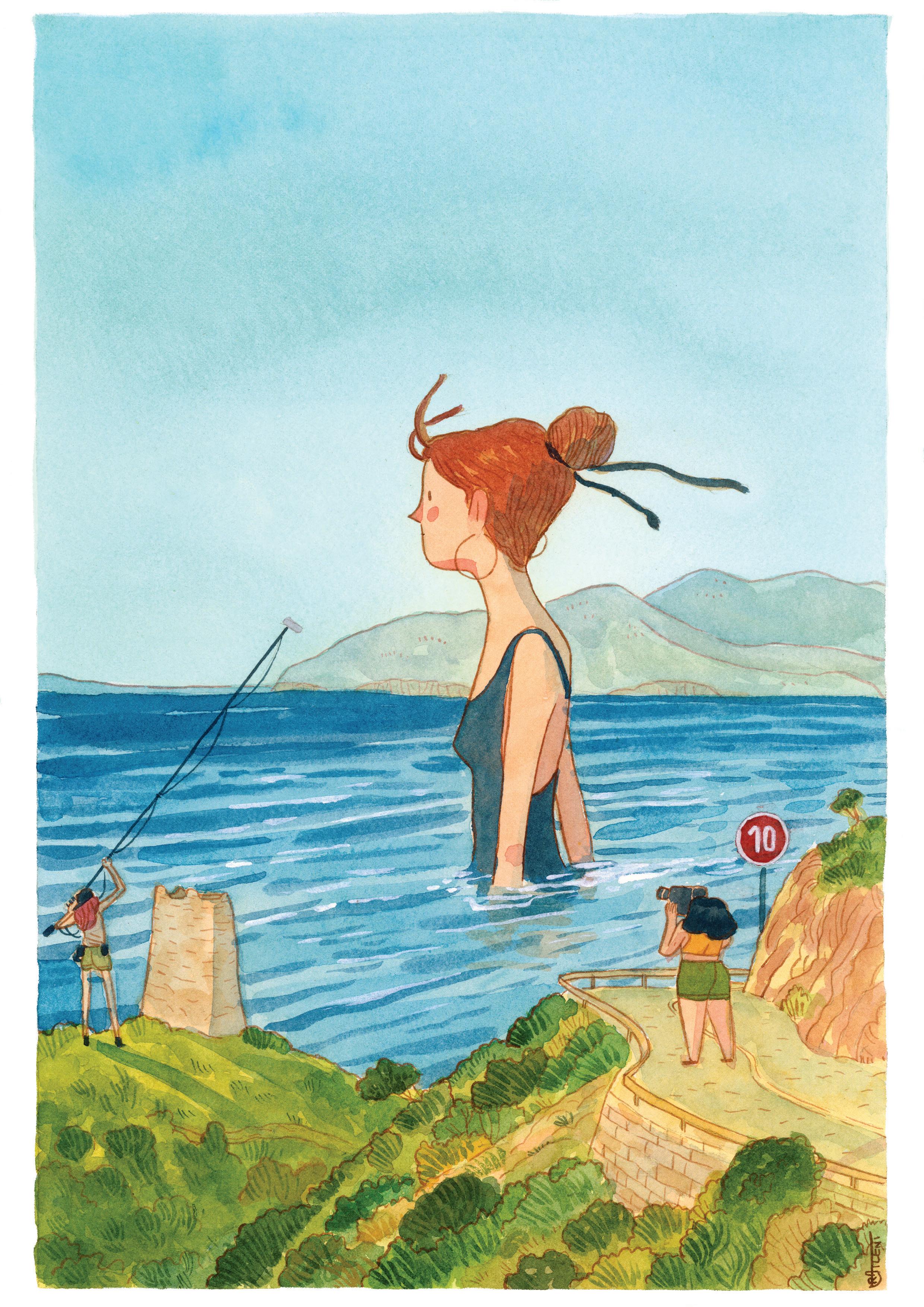


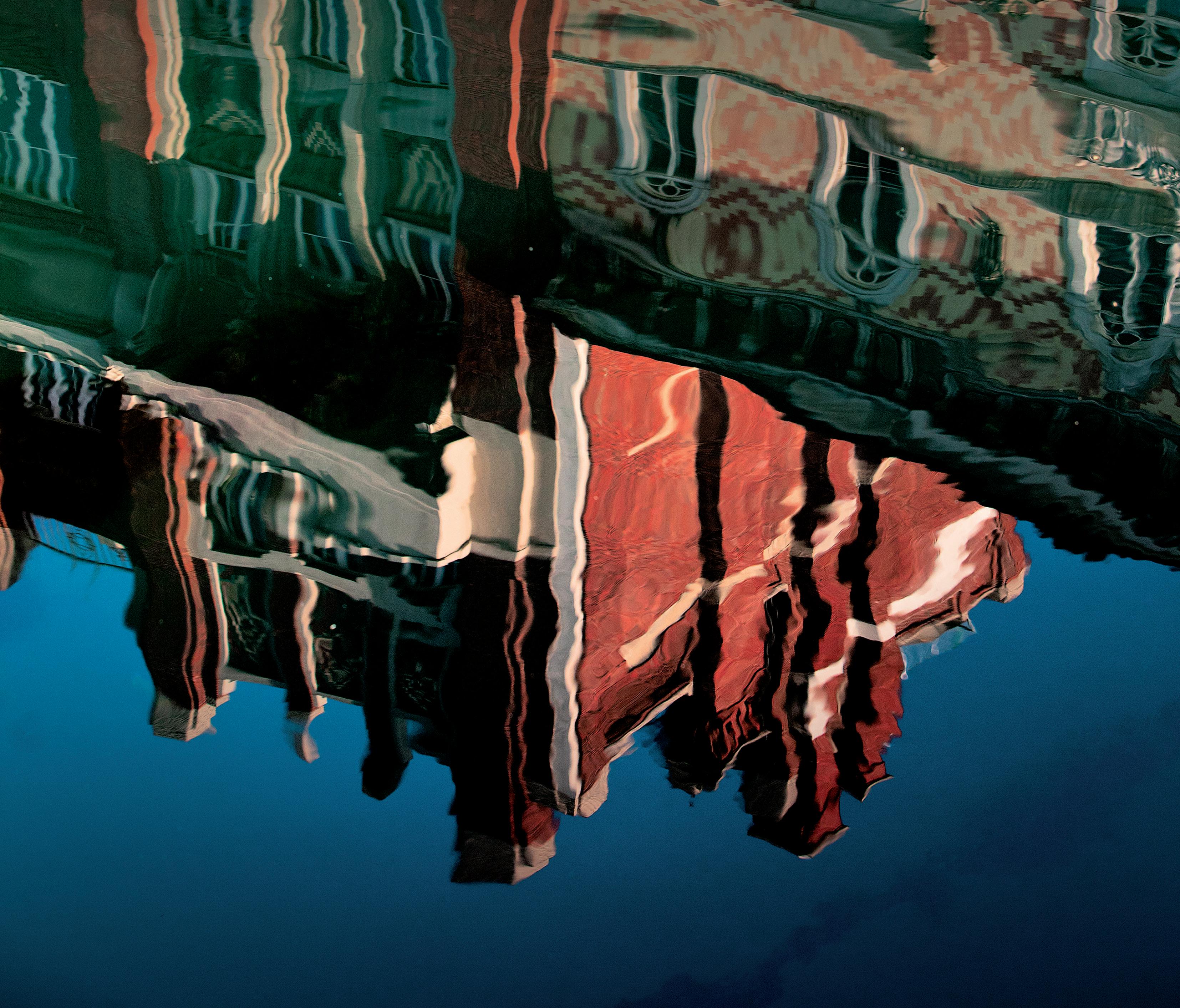
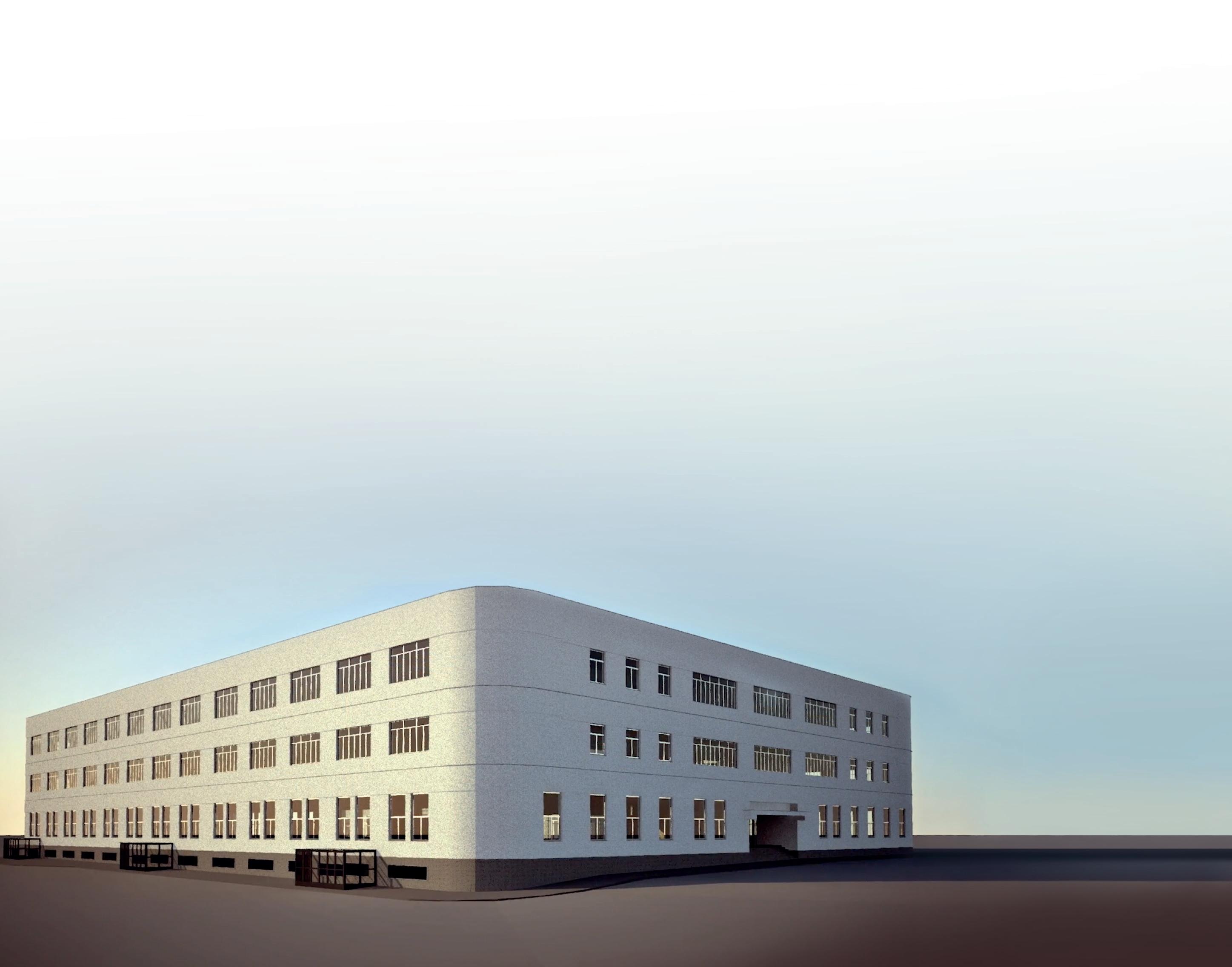
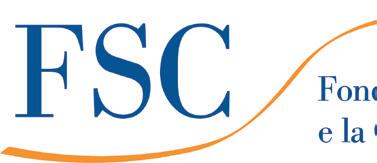
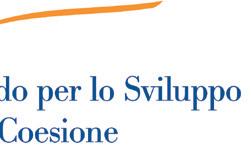


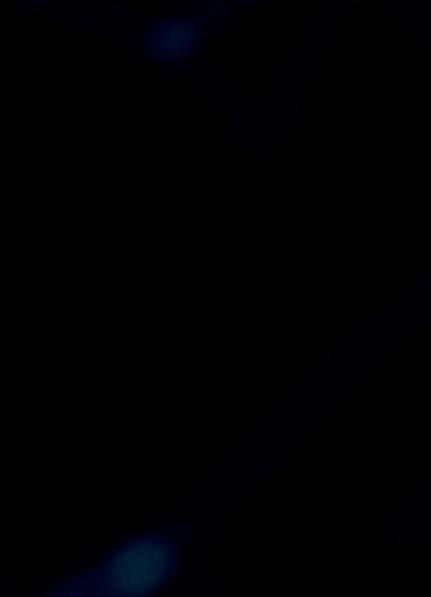











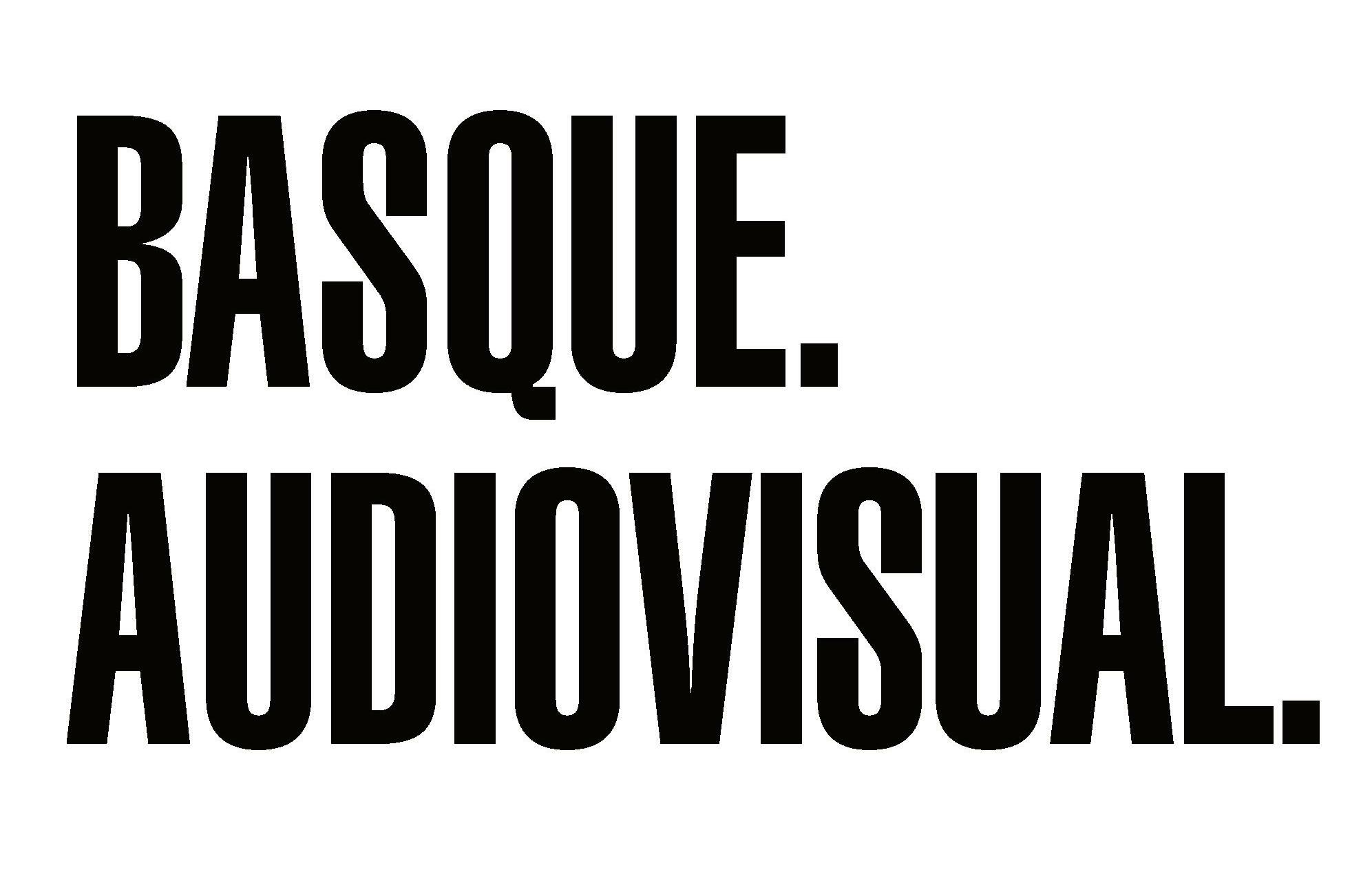

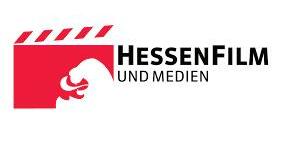








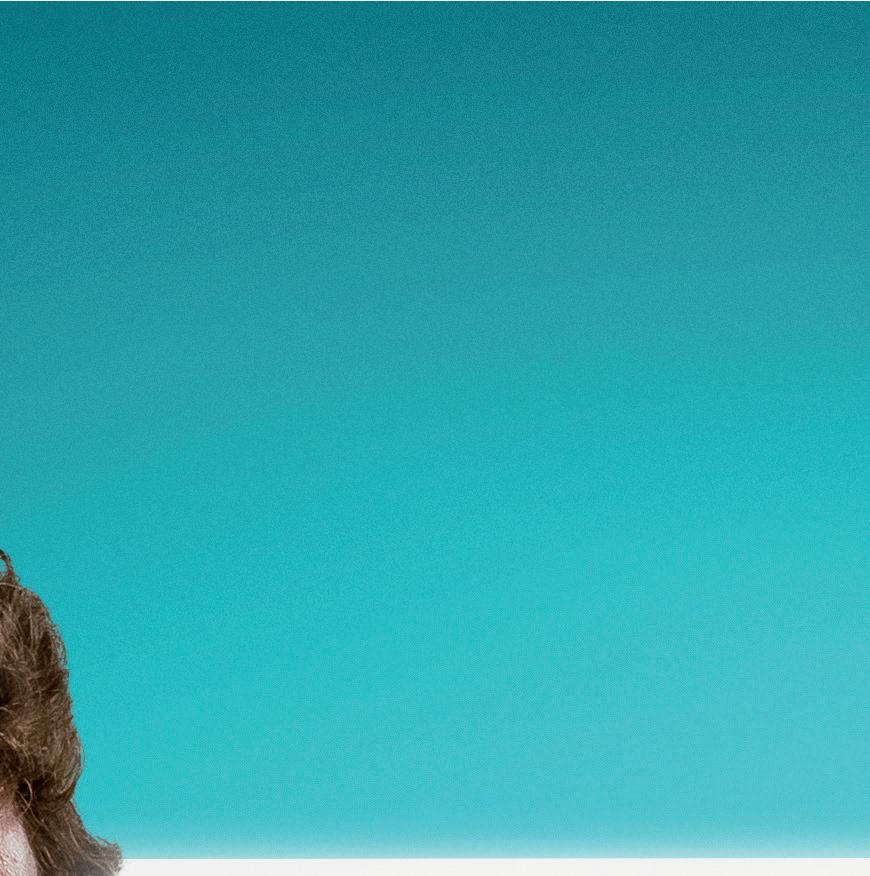

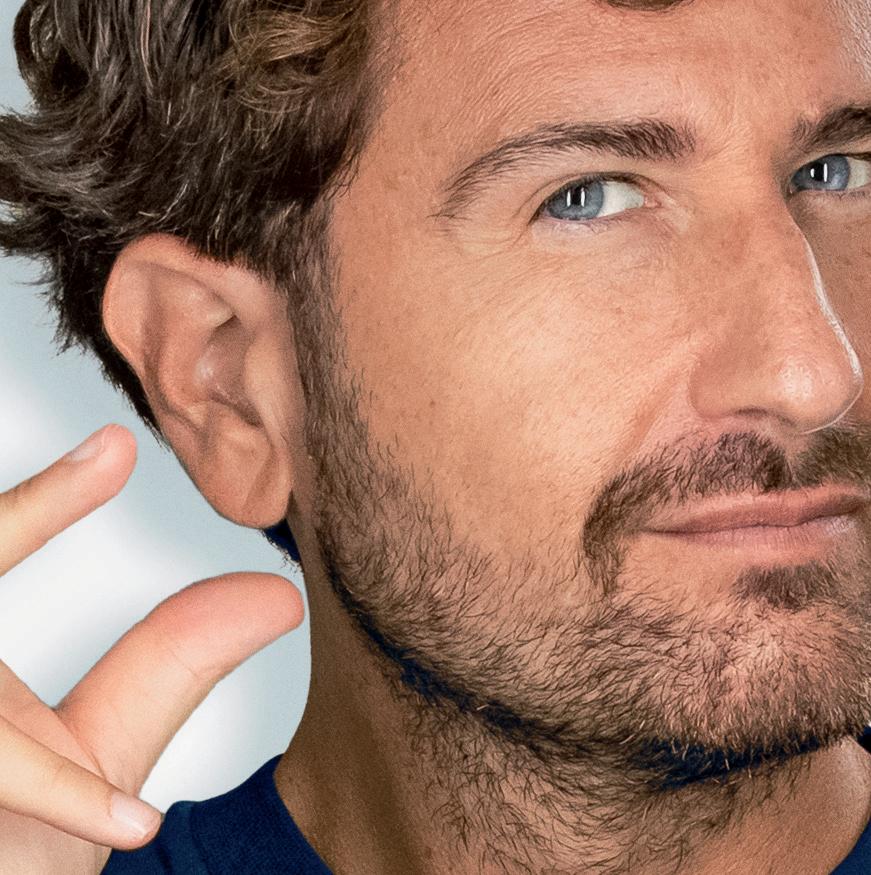
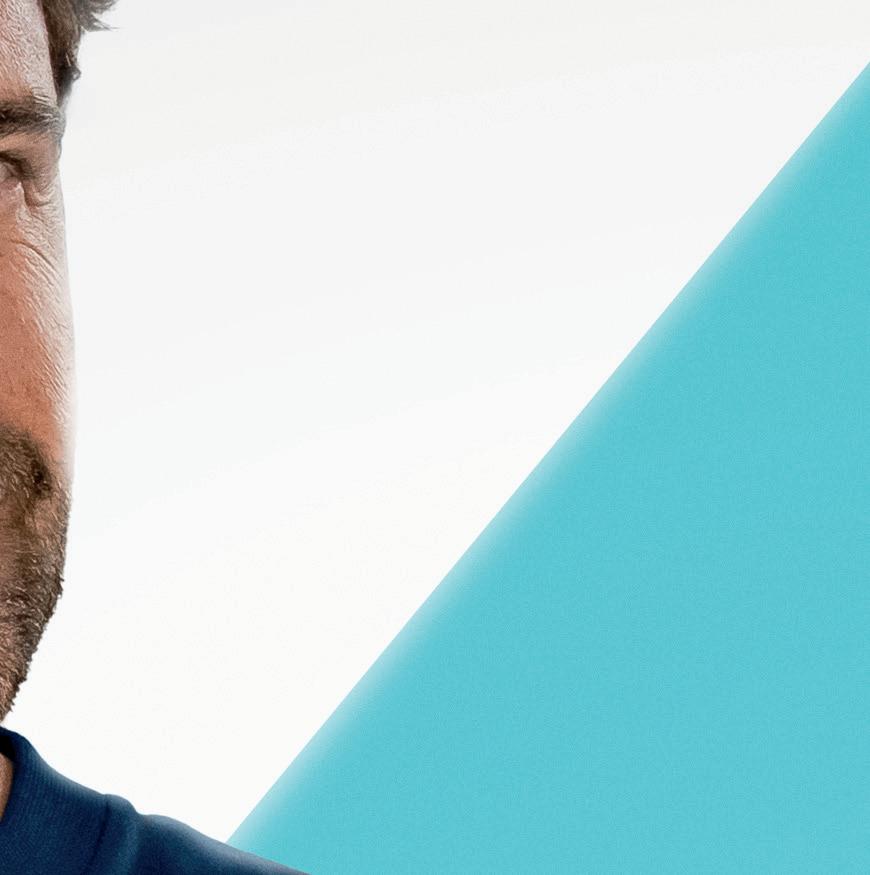
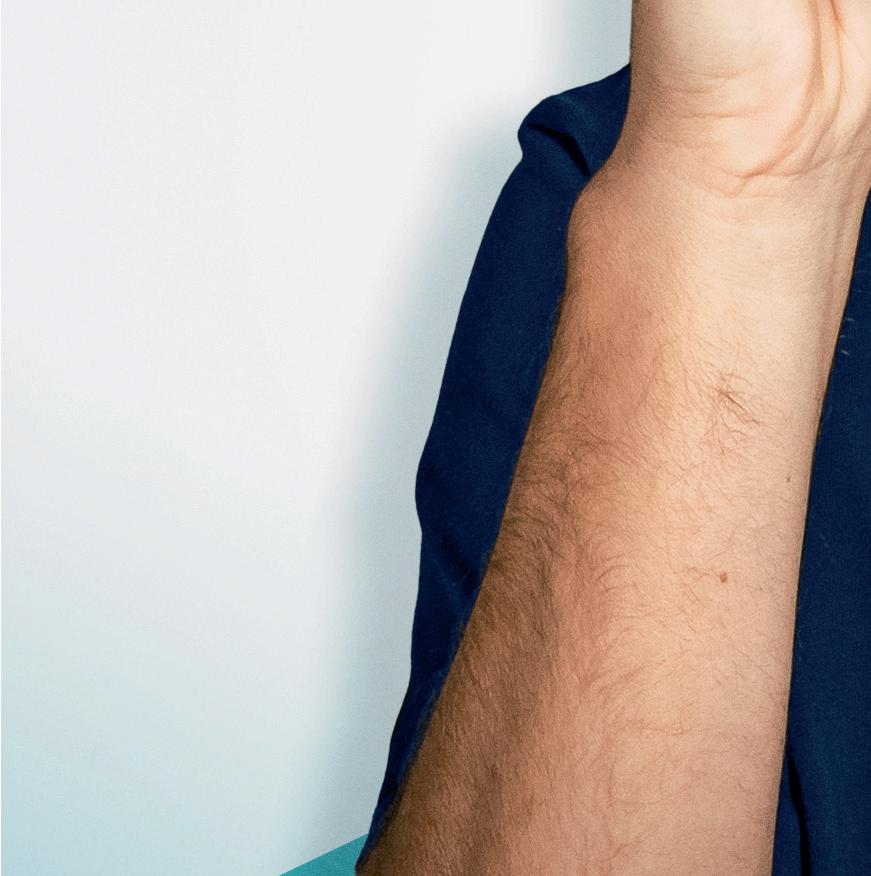
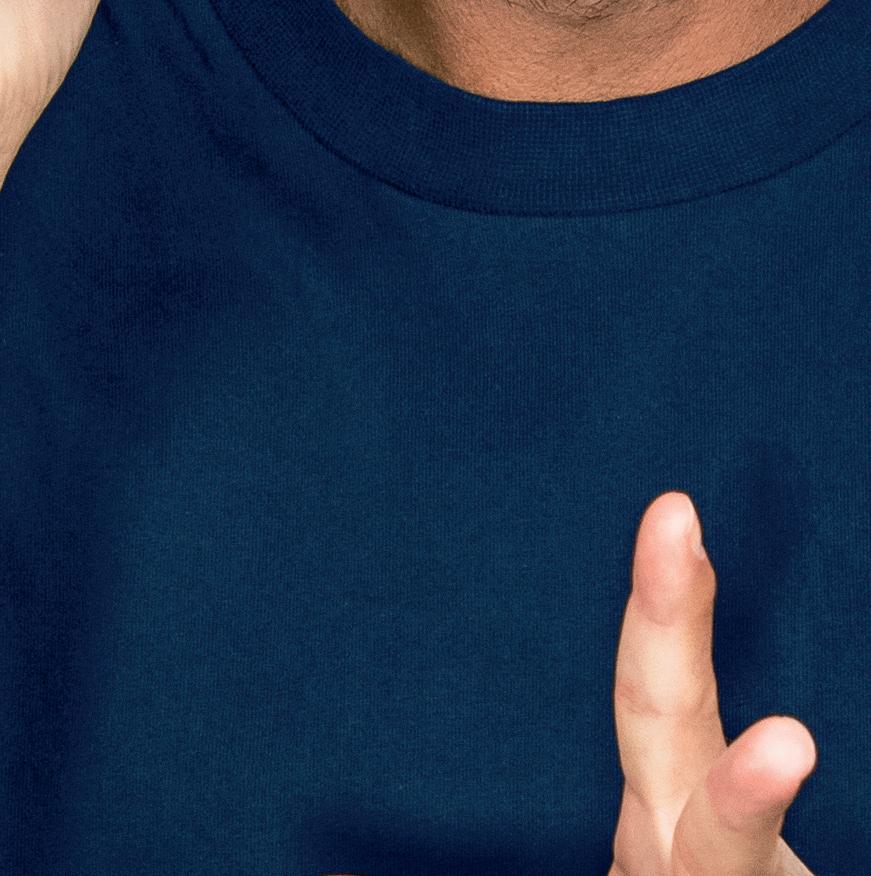


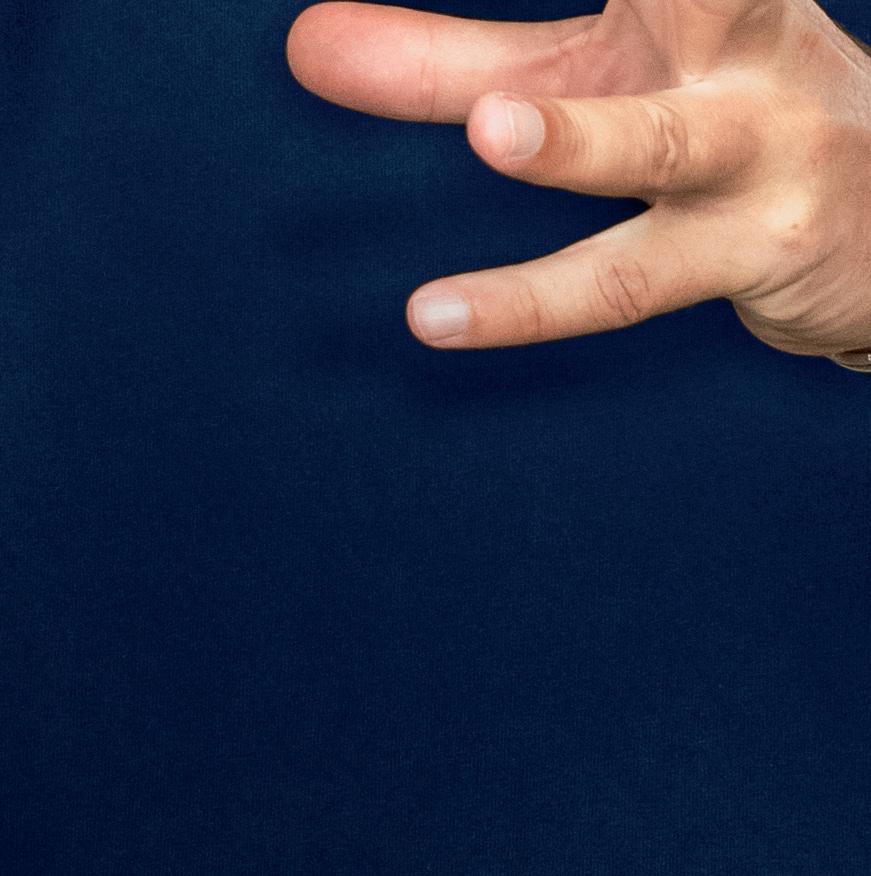
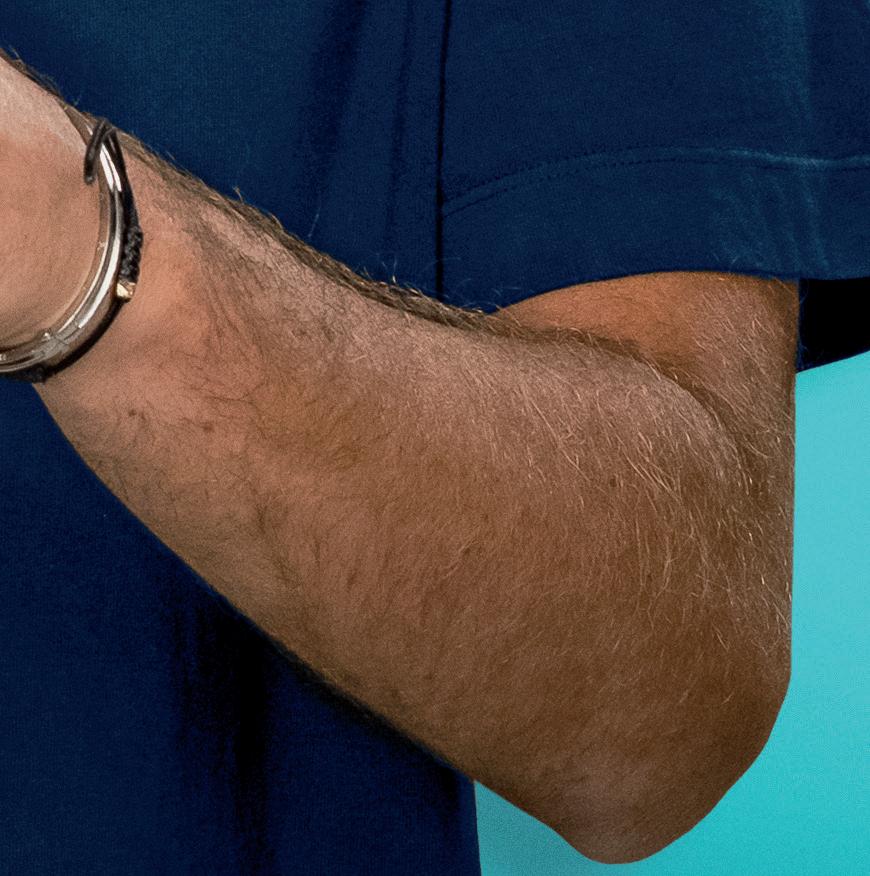

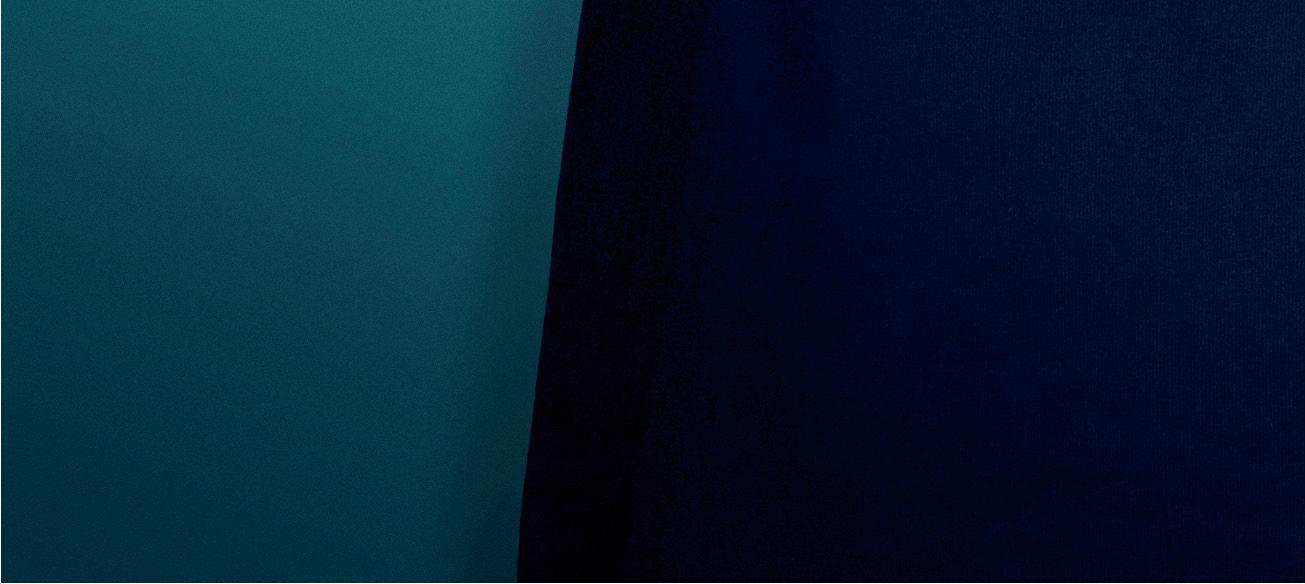
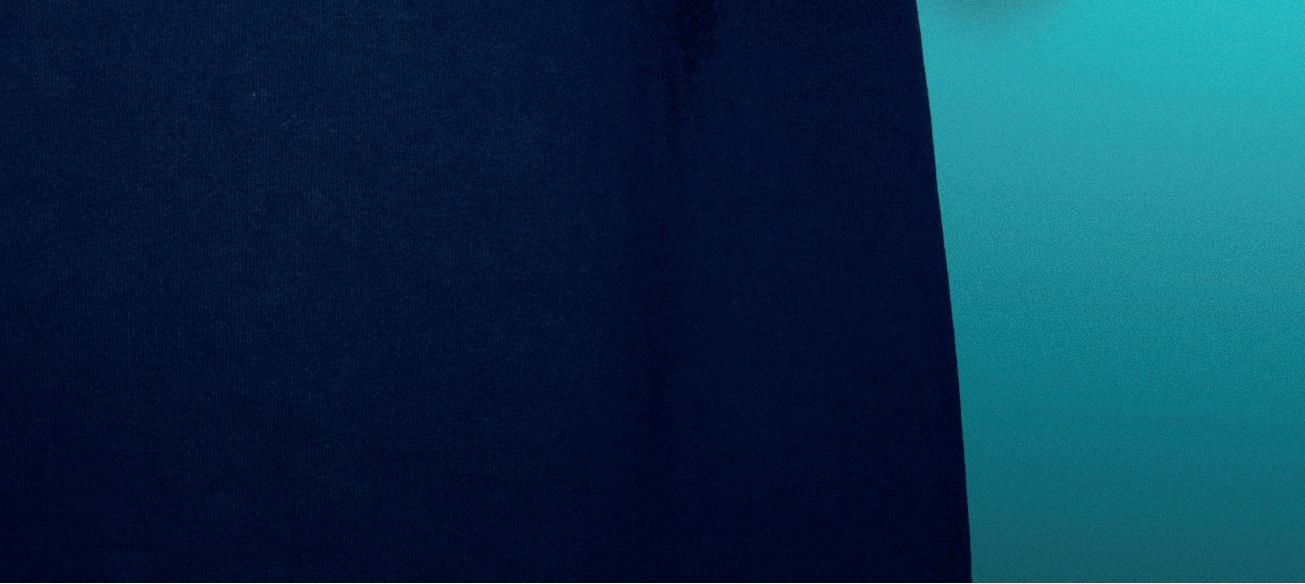



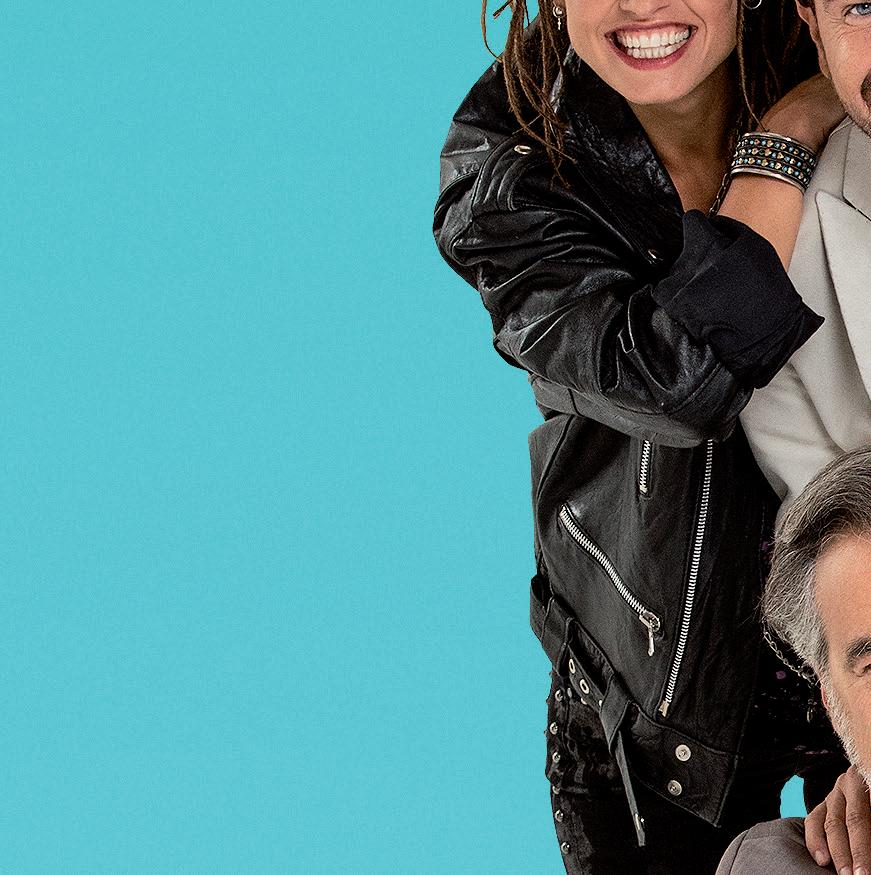
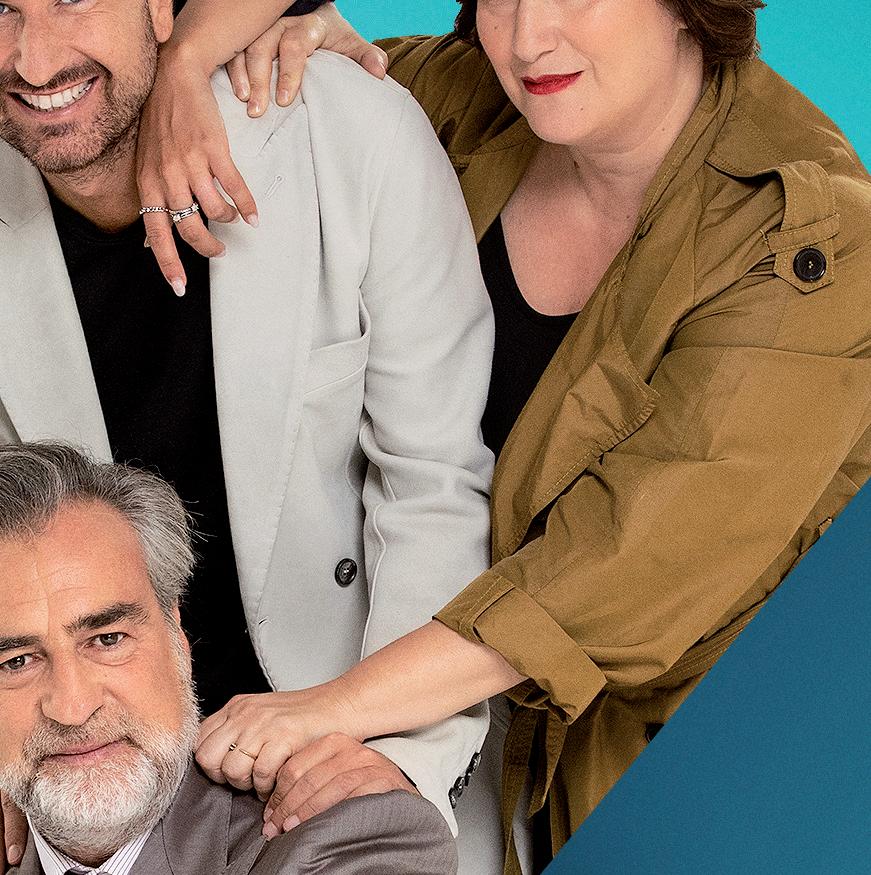





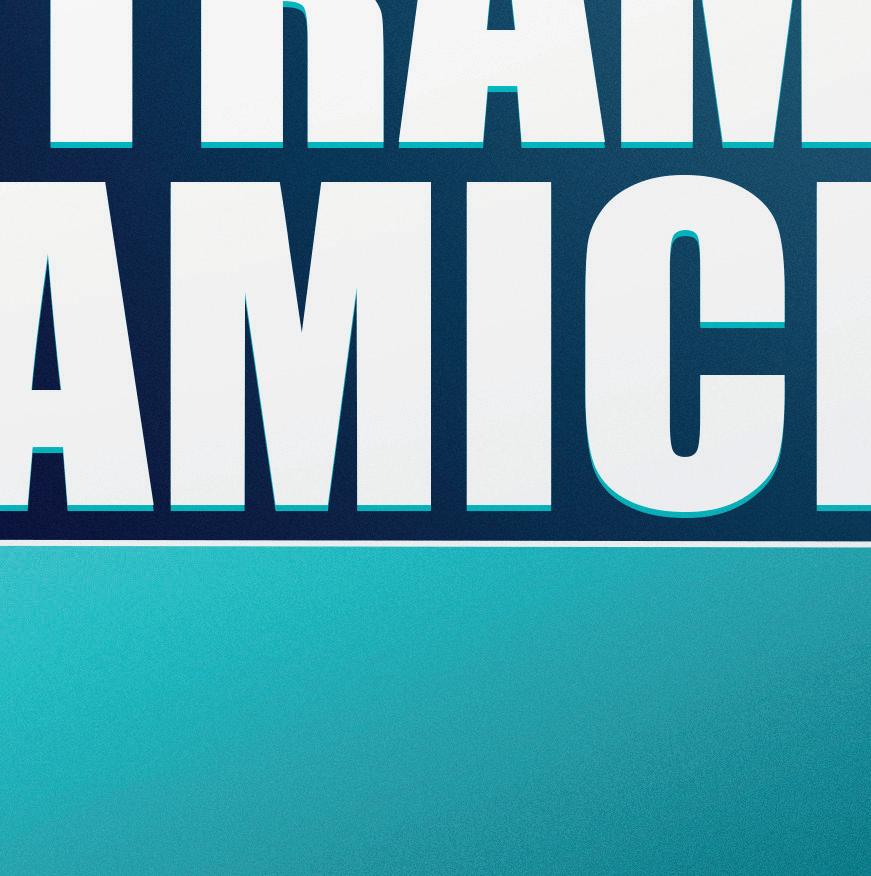


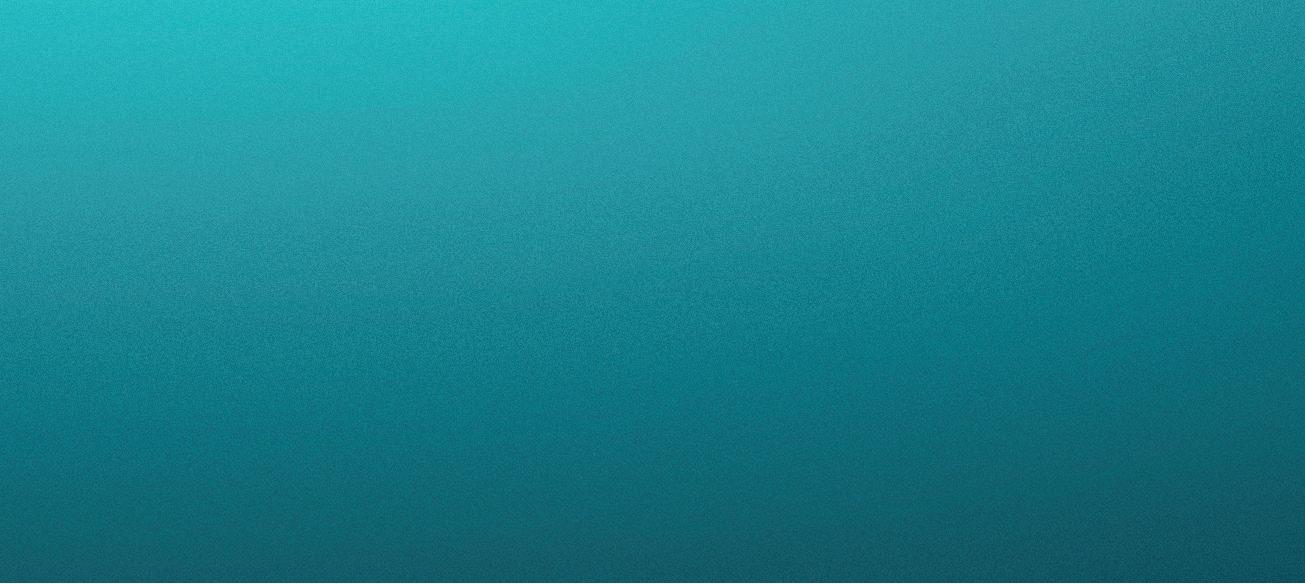

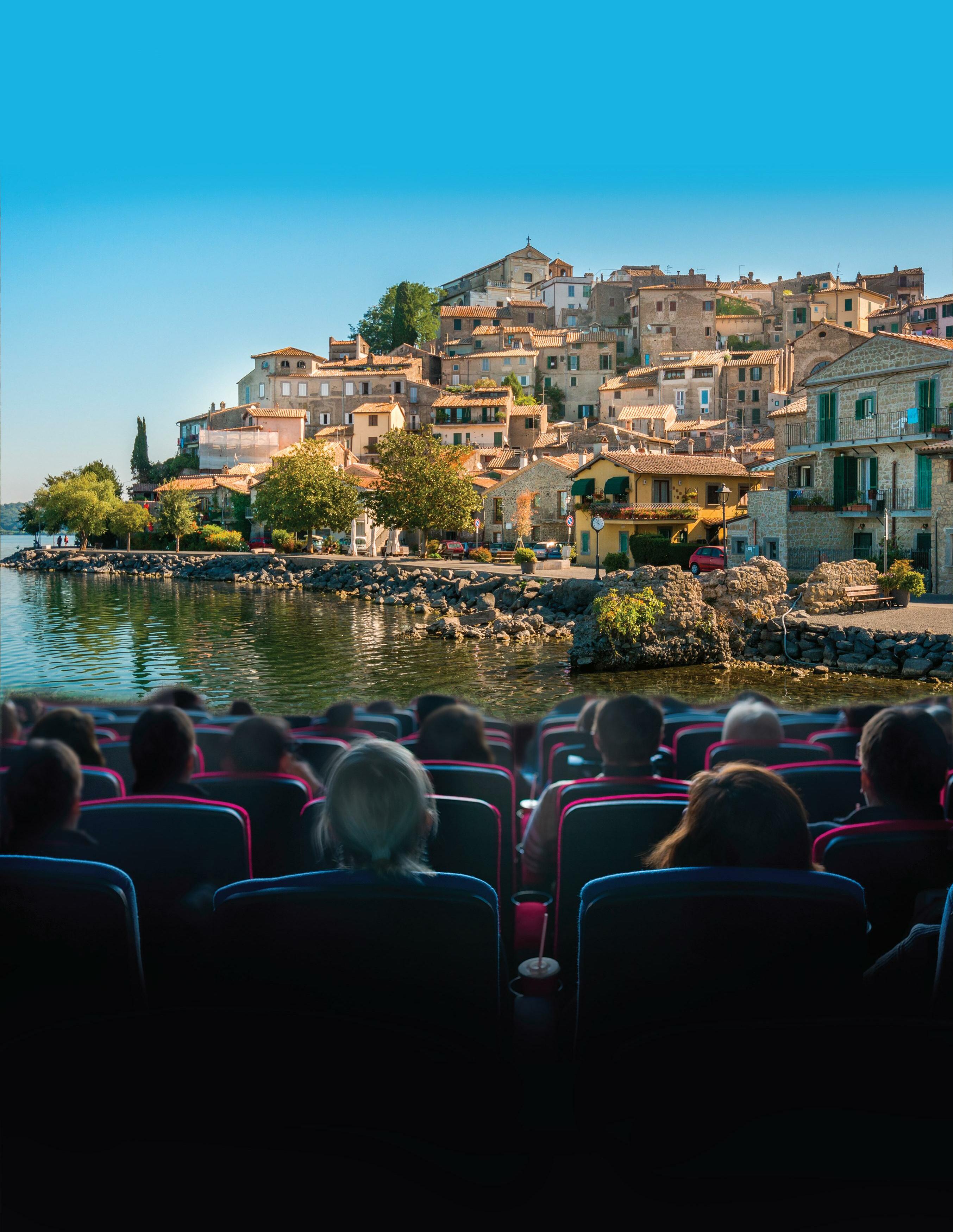



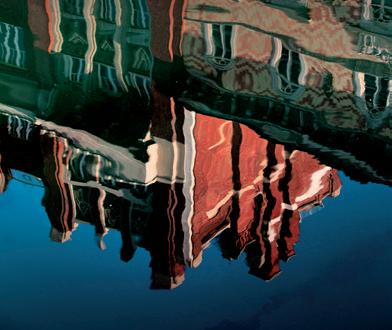





























































 Mancini
Mancini

































